Project Stormfury AKA Controlling Hurricanes, Tornadoes And Earthquakes
Project Stormfury was an attempt to weaken tropical cyclones by flying aircraft into them and seeding with silver iodide. The project was run by the United States Government from 1962 to 1983. Project Stormfury AKA Controlling Hurricanes
When The U.S. Tried To Control Hurricanes
From the 1940s to the 1970s, Project Stormfury and other government efforts tested the limits of the power of science.
As the end of the 2019 Atlantic hurricane season approaches on Nov. 30, the tally of destruction left by storms this year has been enormous. In August, Hurricane Dorian lingered over much of the Bahamas for three devastating days, leaving the country with over 65 people dead.
In September, Tropical Storm Imelda dropped 40 inches of rain on coastal Texas. Repairing the damage caused by both storms will cost many billions of dollars.
Given the destruction and loss of life caused by such storms, the idea of diverting them is tempting. This summer, President Trump reportedly asked senior officials to explore using nuclear weapons to divert hurricanes from the U.S.
This notion is so popular that the website of the National Oceanic and Atmospheric Administration (NOAA) includes a helpful explainer on the many reasons it is not a good idea (think radioactive fallout).
Trying to direct the course of a massive hurricane may sound foolhardy, but the idea was once pursued with serious intent. In the wake of World War II, many believed that control of the weather was imminently possible and would be a boon, making it possible to divert damaging storms and deliver rainfall to drought-stricken communities.
This is CRAZY!! What Are They Doing To The Weather?!
Food Plant Disruptions ???? https://youtu.be/2llMSoEZOMc
Laser Cloud Seeding ???? https://youtu.be/6x-2pokjU0g
NASA Cloud Making Machine ???? https://youtu.be/v67nPTG3Pno
Curious Droid Explains HAARP ???? https://youtu.be/5WdLV3YRMvw
How To Reverse Climate Change ???? https://youtu.be/vpTHi7O66pI
WEF Great Reset Agenda ???? https://youtu.be/6o02uGWuMD0
~~~~~
⛓️ ???? Useful Links ???? ⛓️
► Charles Hatfield Story: https://daily.jstor.org/charles-hatfi…
► 50+ Countries Modifying Weather: https://public.wmo.int/en/resources/b…
► Cloud Seeding Effectiveness According To UAE: https://www.wateronline.com/doc/uae-s…
► Bill Gates Wants To Block Out Sun: https://www.forbes.com/sites/arielcoh…
► China Vows Total Control Of Weather By 2035: https://www.reuters.com/article/us-ch…
~~~~~ –
TIMESTAMPS –
0:00 Intro
0:45 History Of Weather Modification
3:52 The Invention Of Cloud Seeding
8:41 Effectiveness Of Cloud Seeding
12:19 New Weather Modification Methods
17:05 Why Is This Not Being Discussed?
21:46 Outro
Updated: 9-19-2022
Hurricane Fiona In Puerto Rico And 7.6 Magnitude Earthquake In Mexico Preceded By Identical Events That Occurred (5yrs. 2017) Ago In Both Places
* Monday’s event arrives exactly 35 years after a powerful earthquake that killed thousands in 1985, and exactly five years after one that killed at least 350 in 2017. “It’s this date, there’s something about the 19th,” said business owner Ernesto Lanzetta. “The 19th is a day to be feared.”
* Hurricane Maria was a deadly Category 5 hurricane that devastated the northeastern Caribbean in September 2017, particularly Dominica, Saint Croix, and Puerto Rico. It is regarded as the worst natural disaster in recorded history to affect those islands.
Cloud seeding, the basic tool for modifying clouds and therefore hurricanes, was first developed in 1946 by researchers at General Electric, who noticed that dry ice caused the clouds created by their own breath to produce snow inside the company’s new domestic freezers.
The dry ice acted as an artificial nucleus, encouraging super-cooled water to form crystals of snow and in the process release latent heat.
That technique—modified to use tinier and more effective crystals of silver iodide—was soon put to use in real clouds to see if rain could be produced. Results were mixed, but projects in small-scale weather control nevertheless continued, with enthusiasm high in arid Western states.
Almost immediately interest ran from individual clouds to entire hurricanes. By October 1947, scientists working on the government-funded Project Cirrus made the first attempt to modify a hurricane. The results were both alarming and inconclusive.
After seeding, the hurricane, east of Jacksonville, Fla., abruptly altered its course, reversing track and heading west before making landfall on the coast of Georgia and South Carolina and causing a public outcry.
It was impossible to know for sure whether the seeding had caused the change in direction, but the episode nevertheless cast a pall over the prospects of weather control.

Despite the risks, the allure of controlling one of the most destructive natural forces on earth remained strong. Following a series of devastating hurricanes in 1954 and 1955, Congress allocated funding for a National Hurricane Research Project tasked with both basic research and investigating storm modification.
Promising results from a test made on Hurricane Esther in 1961 paved the way for a joint effort of the Navy and the U.S. Weather Bureau called Project Stormfury.
Researchers working on the project believed that the eyewall of a hurricane contained abundant supercooled water. Dropping enough silver iodide into this precise location in a storm, they theorized, could cause the eyewall to release enough latent heat that it would become unstable and move outward.
Due to the conservation of angular momentum, this movement would cause the storm to slow and weaken, just as the widely outstretched arms of a spinning ice skater slow her down.
“This was absolutely mainstream science at the time,” says Hugh Willoughby, a professor of atmospheric science at Florida International University and a former director of NOAA’s Hurricane Research Division.
It was based, Dr. Willoughby says, on the prevailing assumption that hurricanes were inherently unstable, “like something that’s balanced on the edge of a counter and if a cat bumps against it, it falls and breaks.”
Given the right trigger, even a small amount of energy could be enough to perturb the storm into a weaker state.
It was decided to attempt to modify hurricanes only in a safe zone far enough from coastal regions that inadvertent landfall would be avoided. In 1963, the Stormfury team decided to carry out two modification attempts on Hurricane Beulah, even though the storm was relatively weak and had an indistinct eye.
On the first attempt, the seeding material missed the giant clouds, and the storm remained unchanged. On the second, the seeding was on target and maximum winds declined by 20%.
A lack of suitable hurricanes for seeding frustrated further attempts to refine or ratify the hypothesis until 1969, by which time researchers had revised their understanding of the storms.
Rather than trying to cause instability in the inner eyewall, they focused on injecting a massive amount of silver iodide to stimulate the formation of a second, outer rainwall that would weaken the original eyewall by cutting off its supply of heat and moisture.
They tested this hypothesis on Hurricane Debbie in 1969, dropping more than 1,000 silver iodide capsules into the storm. The hurricane seemed to respond, with a reduction of wind speed in line with that predicted by the hypothesis.
The only other hurricane to be seeded under the program was Ginger in 1971, but the storm lacked a strong center, and the results were considered inconclusive.
As it turned out, Hurricane Debbie was to be the high point of Project Stormfury. The program stalled during the 1970s thanks to a combination of factors including a dearth of hurricanes in the target area.
Following the revelation in 1972 that the U.S. military had been using cloud seeding to trigger rainfall in North Vietnam, weather control took on a newly sinister aspect.
Research into hurricanes continued, however, and scientists made two important observations: Supercooled water was not as abundant in the storms as had been thought, and concentric eyewalls frequently occur naturally.
These two observations undermined the hypothesis on which modification attempts had been made. Since “Mother Nature has her own eyewall replacement cycle,” explains Ed Zipser, a professor of atmospheric science at the University of Utah, there’s not much point in trying to create an artificial one.
The apparent successes of the past might have been a result of mere chance rather than seeding. When Project Stormfury was eventually cancelled in 1983, it was deemed a failure.
Today, no one is seriously pursuing the once-irresistible idea of modifying hurricanes. In addition to other problems with the Stormfury hypothesis, it is no longer assumed that reducing the intensity, or wind speed, of a hurricane would be beneficial.
Since rainfall or storm surge and not winds cause the most damage, it’s unclear, says Dr. Zipser, “how much good you are doing by turning a small compact intense storm into a larger but weaker storm.”
Hurricane Maria in Puerto Rico is a good example, says Dr. Zipser. “It wasn’t only the eyewall that destroyed the infrastructure of that island.”
It’s possible that new ideas for modifying storms will be developed in the future. What’s needed, says Dr. Willoughby, is a deeper understanding of the small-scale dynamics of cloud physics.
As important as computer models are for pushing understanding forward, there’s no substitute for observations of real clouds. There is still much to learn from the terrifying fury of hurricanes.
The hypothesis was that the silver iodide would cause supercooled water in the storm to freeze, disrupting the inner structure of the hurricane, and this led to seeding several Atlantic hurricanes.
However, it was later shown that this hypothesis was incorrect. It was determined that most hurricanes do not contain enough supercooled water for cloud seeding to be effective.
Additionally, researchers found that unseeded hurricanes often undergo the same structural changes that were expected from seeded hurricanes. This finding called Stormfury’s successes into question, as the changes reported now had a natural explanation.
The last experimental flight was flown in 1971, due to a lack of candidate storms and a changeover in NOAA’s fleet. Project Stormfury was officially canceled more than a decade after the last modification experiment.
Project Stormfury failed to reach its goal of reducing the destructiveness of hurricanes, but it was not without merit.
The project’s observational data and storm lifecycle research helped improve meteorologists’ ability to forecast the movement and intensity of hurricanes.
Cloud seeding was first attempted by Vincent Schaefer and Irving Langmuir. After witnessing the artificial creation of ice crystals, Langmuir became an enthusiastic proponent of weather modification. Schaefer found that when he dumped crushed dry ice into a cloud, precipitation in the form of snow resulted.
With regard to hurricanes, it was hypothesized that by seeding the area around the eyewall with silver iodide, latent heat would be released. This would promote the formation of a new eyewall.
As this new eyewall was larger than the old eyewall, the winds of the tropical cyclone would be weaker due to a reduced pressure gradient.
Even a small reduction in the speed of a hurricane’s winds would be beneficial: since the damage potential of a hurricane increased as the square of the wind speed, a slight lowering of wind speed would have a large reduction in destructiveness.
Due to Langmuir’s efforts, and the research of Schaefer at General Electric, the concept of using cloud seeding to weaken hurricanes gathered momentum. Indeed, Schaefer had caused a major snowstorm on December 20, 1946 by seeding a cloud. This caused GE to drop out for legal reasons.
Schaefer and Langmuir assisted the U.S. military as advisors for Project Cirrus, the first large study of cloud physics and weather modification. Its most important goal was to try to weaken hurricanes.
Robert Simpson became its first director, serving in this capacity until 1965. There were several guidelines used in selecting which storms to seed.
The hurricane had to have a less than 10 percent chance of approaching inhabited land within a day; it had to be within range of the seeding aircraft; and it had to be a fairly intense storm with a well-formed eye. The primary effect of these criteria was to make possible seeding targets extremely rare.
No suitable storms formed in the 1962 season. Next year, Stormfury began by conducting experiments on cumulus clouds.
From August 17 to 20 of that year, experiments were conducted in 11 clouds, of which six were seeded and five were controls. In five of the six seeded clouds, changes consistent with the working hypothesis were observed.
On August 23, 1963, Hurricane Beulah was the site of the next seeding attempt. It had an indistinct eyewall. In addition, mistakes were made, as the seedings of silver iodide were dropped in the wrong places. As a consequence, nothing happened.
The next day, another attempt was made, and the seeders hit their targets.
The eyewall was observed to fall apart and be replaced by another eyewall with a larger radius.The sustained winds also fell by twenty percent. All in all, the results of the experiments on Beulah were “encouraging but inconclusive.”
In the six years after Beulah, no seedings were conducted for several different reasons. In 1964, measurement and observation equipment was not ready to be used.The year after that, all flights were used for additional experimentation in non-hurricane clouds.
Joanne Simpson became its director beginning in 1965. While out to sea in August of the 1965 Atlantic hurricane season, Stormfury meteorologists decided that Hurricane Betsy was a good candidate for seeding.
However, the storm immediately swung towards land, and on September 1, the planned flights were canceled.
For some reason, the press was not notified that there were no seedings, and several newspapers reported that it had begun. As Betsy passed close to the Bahamas and smashed into southern Florida, the public and Congress thought that seeding was underway and blamed Stormfury.
It took two months for Stormfury officials to convince Congress that Betsy was not seeded, and the project was allowed to continue. A second candidate, Hurricane Elena, stayed too far out to sea.
After Betsy, two other hurricanes came close to being seeded. Hurricane Faith was considered a likely candidate, but it stayed out of range of the seeding planes.
That same year, recon flights were conducted into Hurricane Inez, but there were no seedings. Both the 1967 and 1968 seasons were inactive. Because of that, there were no suitable seeding targets in either of those two seasons.
Updated: 1-29-2020
Planned Holistic Herd Grazing To Restore Arid Lands : It’s More Than Rotational Grazing
Holistic Planned Grazing helps ensure that livestock are in the right place, at the right time, and with the right behavior.
Because so many factors are involved in ranching, and because they are always changing, there is need for a system to make planning decisions based on a multitude of factors that play into the wider needs of the ecosystem at large — for the ranchers, soil, plants, livestock, and wildlife.
Each Of The Factors Influencing The Grazing Plan Are Recorded On A Chart:
* When A Farmer Expects To Breed And Wean
* When And Where Areas Will Be Covered In Snow Or Threatened By Fire
* When And Where Antelope Are Having Their Young
* When And Where Ground-Nesting Birds Are Laying
* When And Where The Farmer Will Need To Trample An Eroding Piece Of Ground Or A Harvested Cropfield, Etc.
By taking the entire Holistic Context into consideration during planning, land managers can build a clear picture of where livestock need to be and when. This determines how the manager plans their moves.
Key Questions Holistic Planned Grazing Addresses
Managers subdivide their land into grazing divisions (i.e. pastures, paddocks) to gain control over livestock movements. The divisions are first planned on a map and then on the ground demarcated by fences, natural barriers, or for herders by blazed trees or natural features.
In Creating Their Grazing Plans Livestock Managers Decide How Long The Animals Will Stay Together In One Place, Where They Will Move Next, And When They Will Come Back. The Planning Steps Address These Questions:
* What Landscape Are You Trying To Create?
* Will Livestock Be Used To Regenerate Cropland Soils Through Animal Impact?
* What Other Wildlife, Forestry, Or Other Land Uses Will Livestock Be Used To Enhance?
* How Much Total Forage Will The Land Under Management Have To Supply In The Current Planning Period?
* How Much Forage Will An Average Hectare/Acre Of Land Have To Supply?
* How Long Will Standing Forage At The End Of The Growing Season Last In A Nutritious State (Including Reserves For Late Start Of The Next Growing Season, Drought, Fires, Wildlife, And So On)?
* How Long Will Livestock Spend In Each Grazing Division, And When Will They Return (The Vital Recovery Period Grazed Plants Require)?
* Where And When Will You Need To Concentrate Livestock Most To Maintain Healthy Grassland, Reduce Weeds Or Woody Vegetation, Or Prevent Soil Erosion?
Rotational, Rational and Holistic Planned Grazing – How They Differ
There are any number of rotational grazing systems that involve the division of large grazing areas into smaller ones, and the rotation of livestock through them.
Grazing rotations may appear to work fairly well in perennially humid environments, where livestock are mainly run on planted and fertilized pastures and the variables are fewer.
However, water runoff, soil erosion, decreased biodiversity, and reduced capture of sunlight usually are occurring but just not seen as easily.
Animal performance and forage production are generally not as high as they could be, and very dry or very wet years can cause real problems.
In the seasonally humid (or brittle) environments grazing rotations break down quickly because there are so many variables, and very few, if any, are addressed.
Rotational grazing is centuries old. While it served reasonably well in the more humid environments it generally leads to decreased production over time.
Holistic Planned Grazing is generally more dynamic, gives greater weight toward real-time feedback and new information, and is designed to give land managers the tools and context necessary to manage complex systems.
Updated: 9-23-2022
Bahamas Says Rich Economies Must Pay For Hurricanes They Caused
* Bahamas PM Philip Davis speaks In Interview In New York
* Deeply-Indebted Nation Seeks To Sell $1 Billion Carbon Credits
The Bahamas blamed industrialized nations for a series of devastating hurricanes that have left it deep in debt, as it seeks to sell $1 billion in carbon credits this year.
The ecosystem around the nation’s 700 islands has the capacity to store large amounts of carbon, Prime Minister Philip Davis said Thursday in an interview in New York.
Davis is trying to monetize that by turning to the growing international market for offsets, after receiving little help in covering the billions of dollars of damages caused by several massive storms.
“Most of our debt is the result of loss and damages created over many years and many hurricanes,” he said, a day after Hurricane Fiona passed by some of the islands. “I’m not waiting for the international community. I’m looking for ways and means I could help myself.”
Companies across the globe are driving up demand for voluntary carbon credits as a way to offset their emissions. The market is forecast to rise to $190 billion per year by 2030 from around $1 billion currently, according to BloombergNEF research.
Known for its warm, turquoise waters and white sand beaches, the Bahamas has a 100,000-square-mile carbon sink, which Davis said is one of the world’s largest. The government, which is in the process of receiving third-party verification for the credits, has already received offers of $250 million to $400 million. Davis said they’re likely worth four times as much.
Hurricane Debts
The islands, 50 miles off the coast of Florida at their closest point, have been hit by hurricanes Matthew, Irma and Maria in recent years. In 2019, Hurricane Dorian caused more than $3 billion in damages after tearing up homes and flooding swathes of land.
Moody’s Investors Service has since cut the nation’s credit rating to junk, while S&P Global Ratings has also downgraded the country three times. They also cited the pandemic, which hurt its tourism sector.
Government debt rose to equivalent of 103% of gross domestic product last year, ranking the Bahamas among the world’s most indebted nations. Davis, who took office last year, says he’s targeting debt of around 50% of GDP by the end of his five-year-term.
Bill Is Due
With concerns growing about its debt load, Bahamas bonds maturing in 2032 have dropped to 63 cents on the dollar from around 92 cents at the start of the year, according to data compiled by Bloomberg.
Rich nations that burn the most fossil fuels have an obligation to help countries most affected by climate change, such as the Bahamas, Davis said.
“Our debt is basically related to matters to which we did not contribute,” he said. “The industrialized countries that have been using fossil fuels for centuries, I think their bill is due.”
Updated: 10-1-2022
Developers Prioritized Climate Resiliency Into This Island And Community Allowing Them To Survive Hurricanes Ian And Fiona
Hurricane fiona pummeled puerto rico’s crops—but not those grown indoors.
Vertical farming operations seek to improve food security on the storm-prone island, which imports 85% of what it eats.
A few days after Hurricane Fiona slammed Puerto Rico with catastrophic flooding and whipping winds that destroyed much of the island’s agriculture, Francisco Santana was packing a box of bright green lettuce for delivery. “We’re the only ones in this part of Puerto Rico that have something to ship right now,” he said.
Santana is the founder and CEO of an indoor vertical farming company, Grupo Vesan. His delicate produce had survived the Category 1 storm because it was germinated, nurtured and harvested inside an 8,000-square-foot hydroponic warehouse on the island’s hard-hit southern coast.
Hurricane Fiona showed, once again, how vulnerable the US commonwealth of 3.1 million people is to extreme weather supercharged by climate change. The storm knocked out power to the entire island, washed away roads and bridges and caused billions of dollars in damage. It also devastated the island’s farmers, just as many were beginning to recover from 2017’s Hurricane Maria.
Fiona caused at least $100 million in crop damage, Puerto Rico Agriculture Secretary Ramón González Beiró estimates.
“The vast majority of our plantain and banana crops were destroyed,” he said in a statement. “We’ve also lost crops of citrus fruit, papayas, vegetables, coffee and livestock, among others.”
Even in the best of times, Puerto Rico and many small islands like it across the Caribbean are on the edge of hunger. The island imports more than 85% of all its food. And what is grown here faces constant threats from storms and drought.
That’s what makes the idea of indoor farming — or controlled-environment agriculture, as the industry sometimes bills it — compelling, says Anabelle Broadbent, a Puerto Rican food scientist and microbiologist who has worked extensively on ag tech projects.
“We’re in hurricane alley, and leafy greens cannot be grown outside with storms, floods, iguanas,” she said in a phone interview. “Indoor farming is not competing with traditional agriculture that can do fine outside, but it is great at growing these very fragile plants.”
Green Rush
Once the preserve of green-thumb geeks and cannabis growers, indoor farming has burst into the mainstream and piqued investor interest as the world wrestles with how to feed a booming population.
Brooklyn-based Upward Farms announced early this year that it’s building the world’s largest vertical indoor farm in Pennsylvania.
Not to be outdone, California startup Plenty Unlimited Inc. recently announced plans for what it called the world’s largest indoor vertical farming campus in Virginia.
In Puerto Rico, indoor farming is still an oddity. While outdoor hydroponic farms are growing in popularity, only a handful of operations are moving their crops inside, where everything from light to humidity to carbon dioxide levels can be controlled.
By creating high-yield indoor farms close to consumers, Santana’s Grupo Vesan and companies like it are able to churn out pesticide- and herbicide-free produce at rates that can compete with traditional agriculture.
Fusion Farms, an aquaponic company in Mayagüez, is trying to muscle in on the leafy green market with the help of Monllor Capital Partners, a Puerto Rico-based investment fund focused on ESG, which took an undisclosed stake in the operation. Farm in the City, another Puerto Rican start-up, is converting shipping containers into mini hydroponic farms.
In his chilled warehouse, Santana is growing 10,000 heads of lettuce at a time in racks stacked seven levels high. With a staff of just three, he harvests 12 times a year, selling fresh lettuce to local bakeries and grocery stores for $1.30 to $1.60 a head — about a third of the price of imported romaine.
Santana also sells special-built container farms, and still uses some to experiment with exotic (for the Caribbean) crops like strawberries and mint.
He’s been in talks with investors about expanding his operation and creating an education and research center to promote indoor agriculture across Puerto Rico.
Even so, he says his operation, tucked into an industrial park near Puerto Rico’s second-largest city, Ponce, often faces skepticism from traditional farmers. Why would you move plants indoors on a tropical island that gets plenty of sunshine and rain?
“If I were planting outside, I would need a huge space,” he said. “Outside, crops are so vulnerable. Let’s not even consider hurricanes, but often it’s overcast or there’s not enough rain.”
But indoor farming has its challenges. Santana has been in a long-running fight with the Puerto Rican government agency that leased him the building he’s using but is now trying to break the contract. He also has to deal with punishing energy bills. Ten days after Fiona, his part of the island was still without power.
The previous day, Santana had spent seven hours trying to find diesel to keep his backup generators running — critical to keeping water flowing and the air cool in his grow room.
“If I didn’t find the diesel yesterday, you and I would be having a very different conversation,” he said. “You’d be watching me throw away my crop.”
This 100% Solar Community Endured Hurricane Ian With No Loss Of Power And Minimal Damage
Anthony Grande moved away from Fort Myers three years ago in large part because of the hurricane risk. He has lived in southwest Florida for nearly 19 years, had experienced Hurricanes Charley in 2004 and Irma in 2017 and saw what stronger storms could do to the coast.
Grande told CNN he wanted to find a new home where developers prioritized climate resiliency in a state that is increasingly vulnerable to record-breaking storm surge, catastrophic wind and historic rainfall.
What he found was Babcock Ranch — only 12 miles northeast of Fort Myers, yet seemingly light years away.
Babcock Ranch calls itself “America’s first solar-powered town.” Its nearby solar array — made up of 700,000 individual panels — generates more electricity than the 2,000-home neighborhood uses, in a state where most electricity is generated by burning natural gas, a planet-warming fossil fuel.
The streets in this meticulously planned neighborhood were designed to flood so houses don’t. Native landscaping along roads helps control storm water. Power and internet lines are buried to avoid wind damage. This is all in addition to being built to Florida’s robust building codes.
Some residents, like Grande, installed more solar panels on their roofs and added battery systems as an extra layer of protection from power outages. Many drive electric vehicles, taking full advantage of solar energy in the Sunshine State.
Climate resiliency was built into the fabric of the town with stronger storms in mind.
So when Hurricane Ian came barreling toward southwest Florida this week, it was a true test for the community.
The storm obliterated the nearby Fort Myers and Naples areas with record-breaking surge and winds over 100 mph. It knocked out power to more than 2.6 million customers in the state, including 90% of Charlotte County.
But the lights stayed on in Babcock Ranch.
“It certainly exceeded our expectations of a major hurricane,” Grande, 58, told CNN.
The storm uprooted trees and tore shingles from roofs, but other than that Grande said there is no major damage. Its residents say Babcock Ranch is proof that an eco-conscious and solar-powered town can withstand the wrath of a near-Category 5 storm.
“We have proof of the case now because [the hurricane] came right over us,” Nancy Chorpenning, a 68-year-old Babcock Ranch resident, told CNN. “We have water, electricity, internet — and we may be the only people in Southwest Florida who are that fortunate.”
Grande said Hurricane Ian came through southwest Florida “like a freight train.” But he wasn’t afraid that he would lose everything in a storm, like he was when he lived in Fort Myers.
“We’re very, very blessed and fortunate to not be experiencing what they’re experiencing now in Sanibel Island and Fort Myers Beach,” Grande said. “In the times that we’re living in right now with climate change, the beach is not the place to live or have a business.”
Solar Success
Syd Kitson, a former professional football player for the Green Bay Packers and Dallas Cowboys, is the mastermind behind Babcock Ranch. Kitson envisioned it to be an eco-conscious and innovative neighborhood that is safe and resilient from storms like Ian.
The ranch broke ground in 2015 with the construction of the solar array — which was built and is run by Florida Power and Light — and its first residents moved into the town in 2018. Since then, the array has doubled in size and thousands of people have made Babcock their home.
“It’s a great case study to show that it can be done right, if you build in the right place and do it the right way,” said Lisa Hall, a spokesperson for Kitson, who also lives in Babcock Ranch.
“Throughout all this, there’s just so many people saying, ‘it worked, that this was the vision, this is the reason we moved here,’” Hall told CNN.
Perhaps the highest endorsement for the city is that it is now a refuge for some of Ian’s hardest-hit victims. The state opened Babcock Neighborhood School as an official shelter, even though it didn’t have the mandated generator. The solar array kept the lights on.
Some of Chorpenning’s friends who live on Sanibel Island — which is now cut off from the mainland after Ian’s devastating storm surge severed the causeway — came to shelter at a friend’s house at Babcock Ranch. It will be a while before they can go back, she said.
“They’re going to be renting a place over here for a while, while they figure out what’s going to happen out there,” she said. “I joked that we may be the only people in southwest Florida whose property value just increased.”
Even Kitson chose to ride out the storm in Babcock to see how the community would fare in the hurricane. Kitson declined CNN’s request for an interview; Hall said he is focused on helping neighboring communities rebuild.
“He was there during the storm; he said, ‘where else would I be?’” Hall said. “We built it to be resilient and as much as you plan and think you’ve done the right thing, you don’t know until you put it to the test.”
As utilities scramble to restore power across the state, Babcock residents say September storms showed that America’s energy infrastructure is not well-equipped to handle worsening extreme weather events.
Hurricane Fiona ravaged Puerto Rico’s power grid when it made landfall there on September 18. Now, Ian has left millions of people in the dark in Florida.
Babcock residents say their neighborhood is a model for urban development in a climate change-ravaged future.
“It’s not what it was 20 or 25 years ago; the storms are getting bigger and bigger, and it’s no surprise, because the warnings have all been there,” Grande said. “I think Babcock Ranch’s future has gotten even brighter.”
Updated: 10-6-2022
A New Era of Climate Disasters Revives Calls For Climate Reparations
Developing countries like Pakistan are leading the charge for compensation from rich nations, backed by new economic research.
Summertime rains supercharged by rising temperatures turned a third of Pakistan into an impromptu lake. A disaster that began in mid-June remains very much ongoing more than three months later.
Estimates of the damage have tripled to $30 billion since the end of August.
The toll of destruction is hard to fathom: 33 million people affected, at least 2 million homes and 25,000 schools wrecked or damaged.
The number of dead stands at 1,700 — and that’s before counting those lost to malaria, dysentery and typhoid, plus the looming food crisis caused by ruined cropland.
Land is still flooded in Larkana, a city of nearly a half million people located in the hard-hit southern province of Sindh. People here could end up among as many as 9 million Pakistanis at risk of falling into poverty as a result of the floods, according to a just-released report from the World Bank.
Water levels have only recently started receding in the area, months after the deluge upended daily life. With homes destroyed, many people are now living on highways in tents. Food and medicine remain a challenge, as the hard work of rebuilding stretches out over the months and years ahead.
Larkana, Pakistan
Flood Waters Surrounded The City, And Many Areas Remain Submerged
Diplomats and world leaders who gather at November’s COP27, a yearly United Nations climate summit, describe Pakistan’s plight with a bit of jargon: loss and damage.
As a matter of international negotiation, this concept has been a quagmire for more than a decade. But the logic underpinning loss and damage is straightforward.
Climate change worsened the flooding in Pakistan, to take a very clear example, yet the people of Pakistan created little of the atmospheric pollution that’s warming the planet.
In fact, the countries propelled to wealth through two centuries of burning fossil fuels typically aren’t anywhere near as vulnerable as developing nations like Pakistan.
But someone has to pay for floods and storms, droughts and heat waves. Without political intervention, the steepest costs of today’s climate — “loss” of lives, cultures or species that can never return, and “damage” to vital infrastructure that needs to be repaired after climate-driven disasters — will continue to be borne by populations that emitted the least.
That’s where a global agreement would come in, with rich nations paying to compensate their poorer counterparts for climate destruction happening now.
If, that is, there was such an agreement.
“My ask is very simple. It is that climate affected countries whose carbon footprint is less than 1% of global GHG emissions should not be having to bear the burden of other people’s contributions,” Sherry Rehman, Pakistan’s minister for climate change, said in an interview Friday on Bloomberg TV. “Here we are afflicted with an event catastrophe that nobody has seen before in living memory and we are bearing the burden of it pretty much on our own with some help from friends.”
Many wealthy nations, including the US, remain dead set against accords that enshrine loss-and-damage mechanisms and establish formal financial obligations.
The phrase has been so triggering to negotiators that the UN-backed science body, the Intergovernmental Panel on Climate Change, has long avoided using it. An IPCC report from February references “losses and damages” — and even that near-usage prompted a push by the US to strike the words.
There Are Exceptions: Denmark recently became the first country to pledge funding, $13 million, toward loss and damage.
Meanwhile, nations that oppose such funding usually keep their position offstage at a diplomatic forum like the upcoming UN conference in Egypt.
But this resistance briefly burst into view during a public appearance last month by John Kerry, the US special envoy for climate change.
“What will you be doing to step up and actually put money into loss and damage?” asked Farhana Yamin, a Pakistan-born British environmental lawyer and a key author of the 2015 Paris Agreement who was in the audience at a New York Times event, where Kerry had been speaking.
The US diplomat replied that resources would be better spent preventing future emissions and adapting to climate extremes.
Then he punctured the veil of normally restrained statements. “You tell me the government in the world that has trillions of dollars, because that’s what it costs,” Kerry said of loss and damage. He added that he would not be “feeling guilty” about it.
Diplomats from wealthy nations have lately seemed attuned to the inevitability that climate reparations will command significant attention at COP27.
Pakistan, coincidentally, holds the rotating leadership role in what will be the largest negotiating bloc. And the conference will take place in the Egyptian resort of Sharm El-Sheikh, making the host a loud advocate in a continent where compensation for climate impacts is needed.
But the moral case, no matter how clear, isn’t gaining ground. “Those suffering the most consequences are not responsible for creating the crisis, which puts the onus on those who were responsible,” European Union climate chief Frans Timmermans told an audience in September at the Africa Adaptation Summit.
“I have to say, let’s be frank, many of our citizens in Europe will not buy this argument today because their worries are linked to their own existence in this energy crisis, in this food crisis, in this inflation crisis.”
Developing nations pushed for a formal loss-and-damage financing process last year at COP26 in Glasgow, Scotland, only to emerge with the promise of a loosely defined “dialogue” on the topic.
If this year yields an agreement that goes beyond the toothless results of prior UN summits, it could create a financial facility to deliver technical assistance and manage payments to developing countries struggling through disasters.
But a diplomatic breakthrough at COP27 isn’t likely, and even a negotiated success wouldn’t necessarily guarantee that money becomes available.
A separate UN commitment made by rich nations in 2009 to contribute $100 billion a year in climate-related financing for poor nations has never once been fulfilled.
In fact, donor countries generally appear reluctant to pay for climate-finance programs given past episodes of corruption, waste and a general absence of accountability.
At this point, it’s not even certain what a formal negotiation would look like at COP27. Germany and Chile have been tapped to lead whatever talks occur on the topic, and officials from the US and EU have said they support some talks.
“If we lose the agenda fight, we might as well come home and forget about the rest of the COP, because it will be useless,” said Saleemul Huq, director of the International Centre for Climate Change and Development in Bangladesh, speaking on a recent webinar organized by Carbon Brief. Without progress on the issue, he warned that the entire UN arm for climate diplomacy “becomes redundant.”
Big emitters for many years have been able to say that everyone is responsible for climate change. Carbon dioxide is the same gas everywhere, and once it’s in the atmosphere no one can say whose was whose. But new lines of scientific evidence have brought more clarity.
Research in extreme event attribution allows scientists to analyze a flood, storm, or heat wave and produce statistical estimates of the intensification caused by greenhouse gas pollution.
Pakistan’s rainfall was 50% more intense than would have been the case without warming temperatures, according to an analysis by World Weather Attribution, the leading scientific group behind this research.
Pakistan goes into Sharm El-Sheikh as the leader of a group known as G77+China, though it now includes more than 130 countries. Support for loss and damage is mostly common ground for this bloc, backed by a conviction that hard evidence is on their side.
“There is a direct correlation of the data that we have, the science that we have, and the actions that — whether it’s developed or developing — countries are going to take on climate,” says Nabeel Munir, Pakistan’s ambassador to South Korea and leader of the G77.
Work has also advanced into assigning historic responsibility for emissions. Two Dartmouth researchers, Christopher Callahan and Justin Mankin, recently published a paper that serves as a ledger connecting those who have polluted with those who have suffered economically as a result.
Among their findings over the 25-year period that ended in 2014 is that US emissions curbed economic growth in Pakistan by $33 billion (in 2010 dollars).
China, likewise, produced emissions that slashed Bangladesh’s potential gross domestic product by $12.3 billion. Russian emissions caused Nigeria to suffer $38.4 billion in lost growth.
This research is explicitly aimed at informing international talks on responsibility for climate change. “There’s no veil of plausible deniability that any one country can hide behind now,” Mankin says.
That also makes this emerging economic field a concern for rich, emitting nations who fear legal liability and enormous bills for compensation.
The five most prodigious emitters — the US, China, Russia, Brazil, and India — have cost the world $6 trillion in losses in 2010 dollars, or about 11% of average annual global GDP from 1990-2014.
The damage attributable to the top two, China and the US, amounts to $1.8 trillion. American opposition to loss and damage is cast in stark relief by findings that the US is responsible for 16.5% of losses from climate change over the 25-year period.
“We have a system of global inequities in that the powerless often don’t have that information,” Mankin says. “We wanted to furnish that information.”
This focus on the economic aspect of climate attribution builds on 2015 research led by Marshall Burke, an environmental economist at Stanford University. His team identified an optimal temperature — 55F (13C) — for economic activity as measured in GDP.
Countries whose average temperatures fall below that threshold can be expected at least initially to see net benefits in a hotter world. Countries pushed above the optimum temperature, including many developing countries, will experience a further loss of potential.
Burke has been working on estimates similar to the Dartmouth findings and approved of their analysis, even if he would have preferred to publish his first.
For an event like the Pakistan floods, “if climate change was at least responsible for increasing their probability, then those who caused climate change have some responsibility,” he says. “To me, that’s a straightforward ethical statement.”
How the new research lands in Egypt, or if it lands, is anybody’s guess. There’s a chance it may not go far enough for those advocating a loss-and-damage process for developing countries.
Doreen Stabinsky, a professor of environmental politics at the College of the Atlantic and an adviser to a group of developing countries, remains unsure.
“Any methodology to come up with these sort of figures will have political implications and biases built in,” she says. Calculating national — rather than per capita — emissions, as the Dartmouth team has done, may have favored the US by putting too much of the responsibility on developing-country emitters like Brazil, China, and India.
Every year that passes brings more stress on Pakistan and its similarly vulnerable neighbors. South Asia’s hydrological cycle is already going haywire because of warming temperatures.
Melting glaciers from the Tibetan Plateau and the mountains around it — known as the Third Pole because it has more ice than anywhere outside the Arctic and Antarctica — appear to have contributed only marginally to this year’s rain-driven flooding in Pakistan.
As Prime Minister Shehbaz Sharif told the UN General Assembly last month: “One thing is very clear: What happened in Pakistan will not stay in Pakistan.”
Next time could be different. Continued emissions will make glacier melt an increasing contributor to future flooding disasters. The developing nations around the Third Pole will be left responsible for these if there’s no mechanism for reparations.
South Asia’s glaciers began melting more intensely in the 1980s, with increasing run-off and, in some places, flooding from bursting glacial lakes.
Glacier mass in the region is set to shrink by as much as half by the end of the century while the number of lake outbursts triples, according to a UN Environment Program report released in April.
In northern Pakistan alone, more than 3,000 glacial lakes have formed in recent years and, based on one estimate, nearly three dozen are vulnerable to sudden bursting.
No one has ever accused the UN climate negotiations of being a scientific process. What negotiators do with either the latest doorstop UN scientific reports or the cutting-edge work of economic attribution scholarship is an open question awaiting its answer in Egypt.
If nothing else, though, the diplomats will go into talks with a far more robust answer to the basic underlying question: Who did what to whom? “It is possible to trace a scientifically valid, causal chain from an emitter to the local impacts of emissions,” Callahan says. And that factors into calculations both moral and political. “I don’t think that’s particularly subtle.”
What Can The World Learn From 100 Climate Resilient Cities?
The splashy initiative was meant to help urban areas cope with climate change. When it went under in 2019, its members got an unexpected lesson in resilience.
Before it was abruptly shuttered in August 2019, the nonprofit 100 Resilient Cities (or 100RC) had helped turn “urban resilience” — broadly defined as a city’s ability to survive, adapt and grow in the face of stresses — into a global movement.
Launched just six years earlier with funding from the Rockefeller Foundation, it was one of the largest initiatives to help cities cope with intensifying climate disasters and other emergencies, and to tackle the chronic challenges that stand in their way.
The nonprofit supported municipal efforts to hire chief resilience officers, provided grants and technical assistance, and — crucially — offered a forum in which its 100 member cities could share ideas and best practices.
By several measures, the program was making progress. So when Rockefeller’s president pulled its funding — which had amounted to $164 million by April 2019 — citing a “a shift in the foundation’s focus to delivering measurable results for vulnerable people,” cities were left wondering how they would continue and what would become of the movement.
A new report from the Urban Institute, the last in a series of analyses commissioned by Rockefeller to evaluate 100RC’s progress, offers a fuller answer to those queries — though the sudden closure of the program made its impact harder to measure.
Overall, the report found, the nonprofit succeeded in helping cities hire chief resilience officers (CROs) and release resilience strategies — two key goals — as well as promoting a more holistic view of recovery and adaptation. But progress wasn’t even across cities, especially after the nonprofit closed, which some local leaders say weakened support from public and private stakeholders.
While more than 70 cities were in the midst of implementing their resilience strategies when 100RC started winding down, at least two dozen hadn’t released theirs — and many ended up scrapping them altogether.
Similarly, while nearly all cities (97%) had hired a CRO at some point during the program, only two-thirds of them were in place as of October 2021.
The drop-off isn’t entirely surprising, since 100RC was only supposed to support CROs’ salaries for their first two years in office.
“But you’d hope to see that number stay stronger over time, as the resilience officer does play a key role in maintaining focus and in doing all the cross-collaboration and silo-busting that’s really required,” says Sara McTarnaghan of the Urban Institute, who co-authored the report.
When it came to strategy implementation, the most common projects were related to fortifying infrastructure against calamities like flooding and heat, including by upgrading drainage systems, building parks and planting trees.
Transportation initiatives, like improving pedestrian and cycling infrastructure and advancing electric vehicle adoption, were also popular.
But while the need for climate change adaptation and mitigation remains urgent, cities’ struggles to protect their vulnerable communities during Covid-19 made clear that urban resilience must go beyond that.
“The thinking that climate resilience [alone] was resilience was really challenged by how much of a shock Covid proved to be,” says McTarnaghan. “So few of the resilient strategies, at least in the 100 Resilient Cities universe, had anticipated and thought ahead to pandemics and health-related shocks.”
The good news is that interest in urban resilience hasn’t waned as a result of the 100RC shakeup. “We see other cities putting in chief resilience officers. We see state and even national policy conversations considering their relevance at different levels,” she says.
“Due to pressure from mayors and from participating cities, there was a lot of interest in sustaining that kind of network and support.”
New nonprofits and global programs have filled the resilience-building gap. Those include longstanding coalitions such as C40 Cities and newer groups like the Atlantic Council’s Adrienne Arsht-Rockefeller Foundation Resilience Center, which launched with a $30 million grant from Rockefeller the same year it disbanded 100RC. That group has since spearheaded the hiring of chief heat officers to combat rising temperatures.
More recently, the former presidents of 100RC and Rockefeller launched a new nonprofit: Resilient Cities Catalyst, which builds on the work of the defunct organization.
There’s more to be done, and what urban resilience will look like down the road will depend on whether these groups and cities stay engaged. “Resilience requires a lot of system transformation in an environment where we so often just have short-term actions,” says McTarnaghan. “That takes time and requires a sustained commitment.”
Updated: 10-7-2022
Youth Climate Activist Says US Should Help Poorer Nations To Adapt
Vanessa Nakate of Uganda says US must do more to assist those already suffering the adverse effects of a warming planet.
Just because the next big climate conference is happening in Egypt doesn’t mean international leaders will pay more attention to the adverse effects already being suffered by developing nations, one of the world’s most prominent young environmental activists said.
“It’s important to highlight the need of having African voices” at November’s United Nations summit, known as COP27, yet many African climate activists are still struggling to secure accreditation and funding to attend, said Vanessa Nakate, a 25-year-old Ugandan.
Meanwhile, she said, wealthier countries — including the US — aren’t doing enough to help poorer nations that barely contributed to greenhouse gas emissions that are warming the planet yet are being lashed by unprecedented storms, floods, landslides and droughts as a result.
Nakate, who was appointed a UNICEF goodwill ambassador last month, will discuss her concerns in a speech at the National Press Club in Washington on Friday.
She has worked closely with teenage Swedish activist Greta Thunberg and the two co-authored an open letter in Time magazine last year urging the news media to focus more of their coverage on climate justice.
One of Nakate’s main concerns is loss and damage, the idea that rich countries should pay poorer nations to adapt to the adverse effects of global warming and to compensate them for the economic losses they’re enduring as a result.
A group of 134 mostly developing countries called at last year’s COP26 meeting in Glasgow for new financial support to help them address climate change effects that they’ve already experienced.
The issue is expected to take center stage at the next gathering, hosted by an African country that’s warming faster than much of the planet and suffering from desertification, rising sea levels and suffocating heat.
But the US has historically hesitated to make meaningful commitments to loss and damage financing, even fighting to keep the concept of legal liability out of the 2015 Paris climate accord.
“The United States has stood in the way over the loss and damage facility, and countries that are suffering right now are still demanding that facility,” Nakate said. “I need to see the United States helping those that are suffering right now.”
President Joe Biden has pledged to quadruple international climate financing. In the 2023 federal budget, he asked Congress to dedicate $11 billion toward helping other nations deploy clean energy and adapt.
The figure includes a $1.6 billion contribution to the Green Climate Fund, an international coalition that helps developing nations address climate change. The US halted its contributions during the Trump administration.
Nevertheless, White House climate envoy John Kerry said last year that, while it’s important for the US to be “thoughtful and sensitive to the reality” faced by developing nations, he also also didn’t want to create “some unfulfillable obligation that people just aren’t able to manage.”
Nakate said young people have already done their part around the world to sound the alarm on the climate crisis, resisting the notion that her generation has a special obligation to bring about change.
“Many times, as young people, we find ourselves in situations where we are asked, ‘What more can we do?’” she said. “It puts such responsibility on young people. We’ve done everything that we can do. Now it’s time for the leaders to do what they need to do.”
Related Articles:
State Department Analyst Resigns After White House Blocked Climate Change Testimony (#GotBitcoin?)
PG&E: The First Climate-Change Bankruptcy, Probably Not The Last (#GotBitcoin?)
A Warming Climate Brings New Crops To Frigid Zones (#GotBitcoin?)
Rewarding Banks For Combating Climate Change (#GotBitcoin?)
Germany Scorned Air Conditioning—Then Came The Heat Wave (#GotBitcoin?)
China Approves Use of Rhino, Tiger Parts For Medical Treatment And Research (#GotBitcoin?)
The Nemesis of The Rainforests: Peace (#GotBitcoin?)
The Amazon: The Heart of The World (#GotBitcoin?)



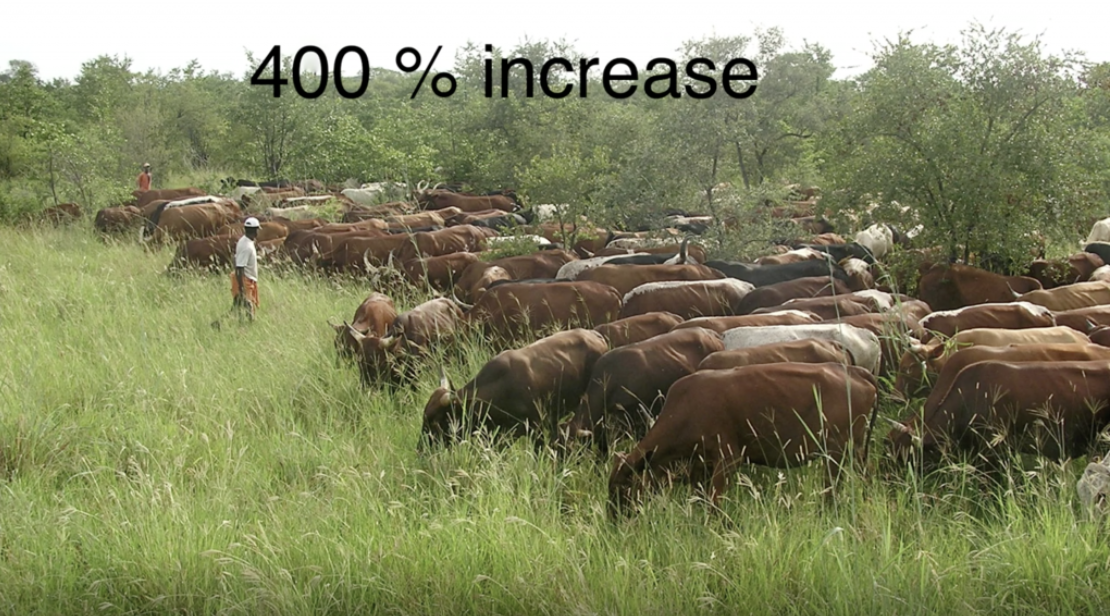
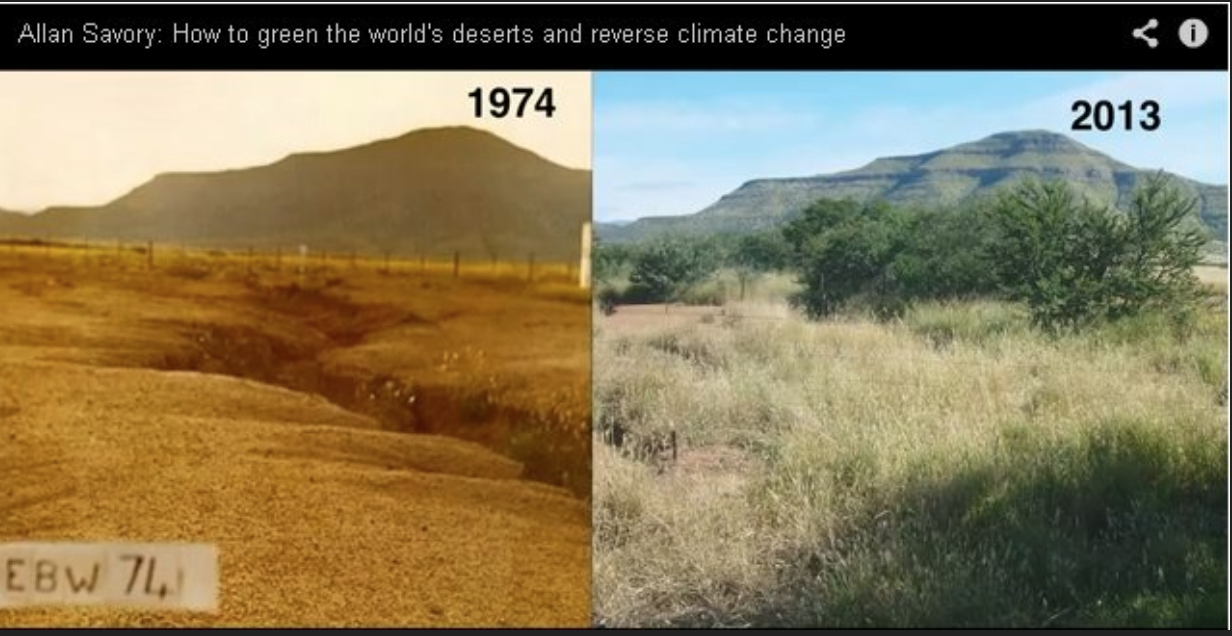

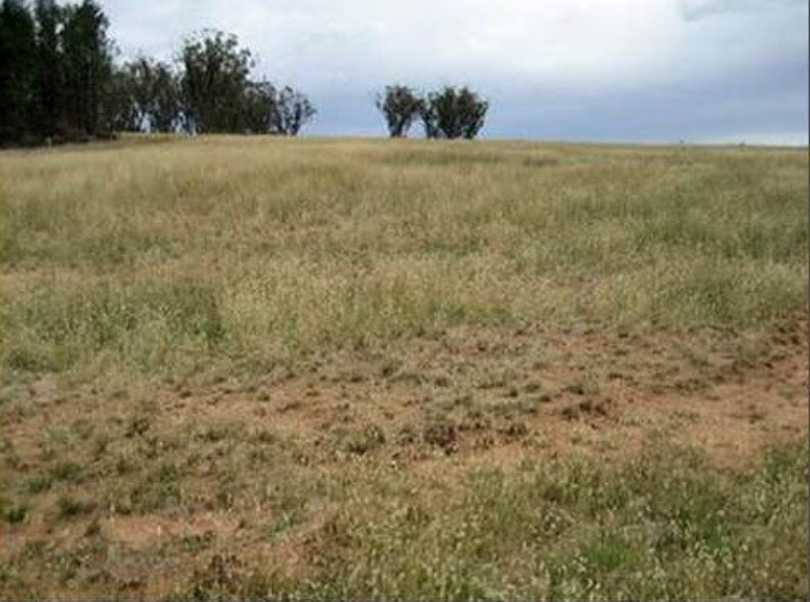
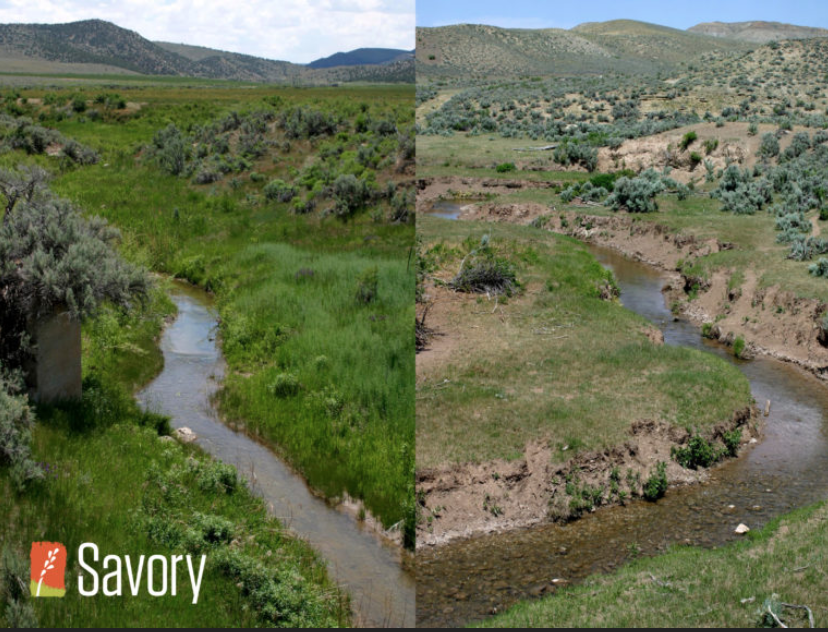
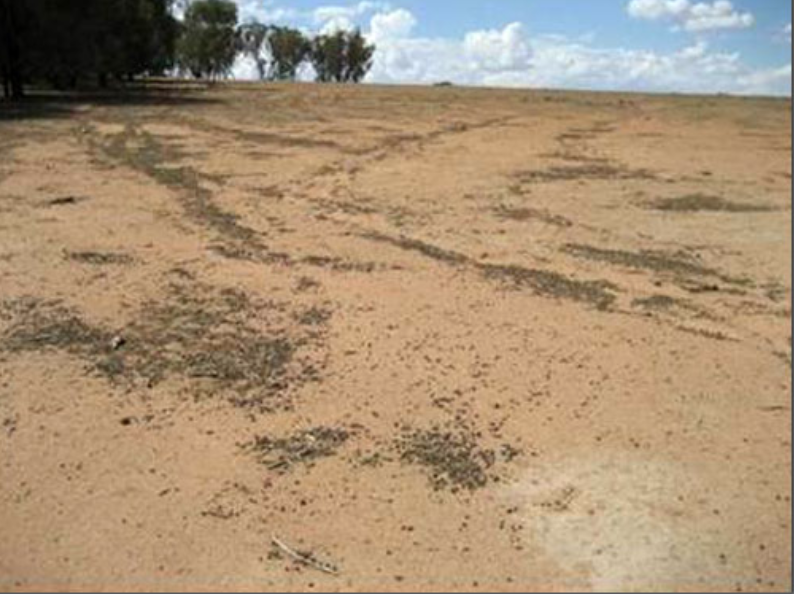
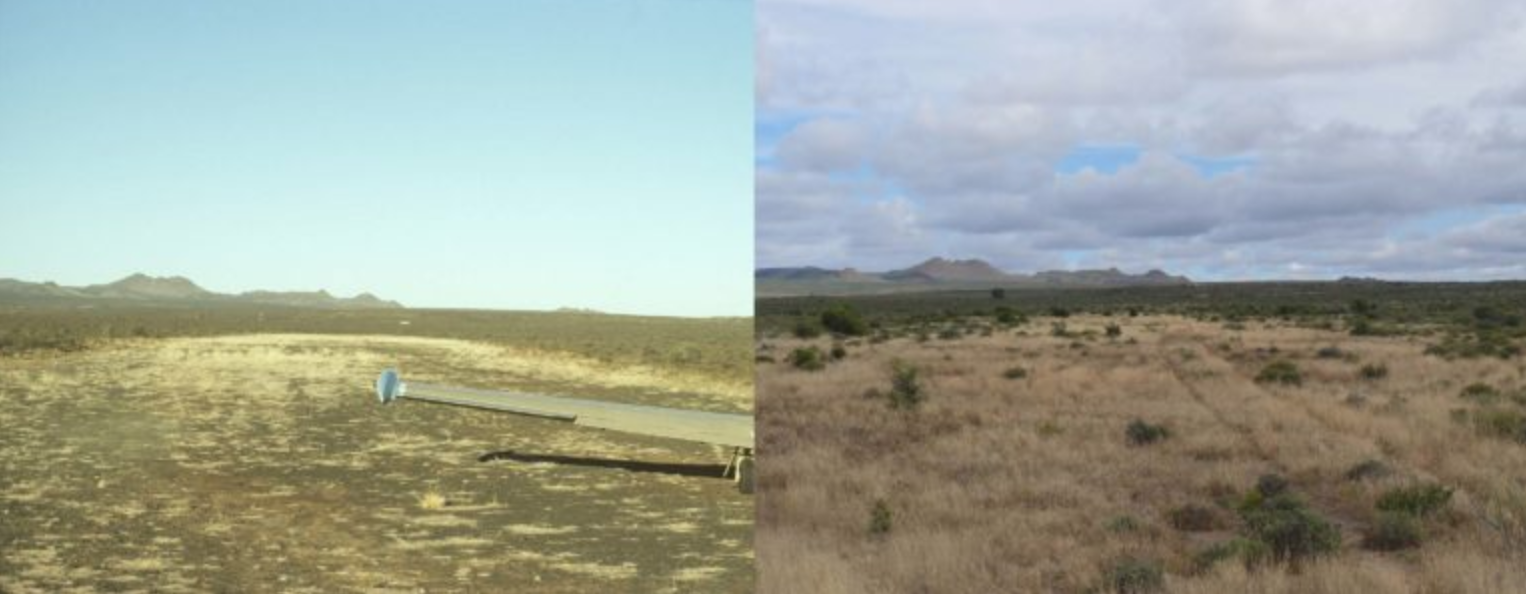
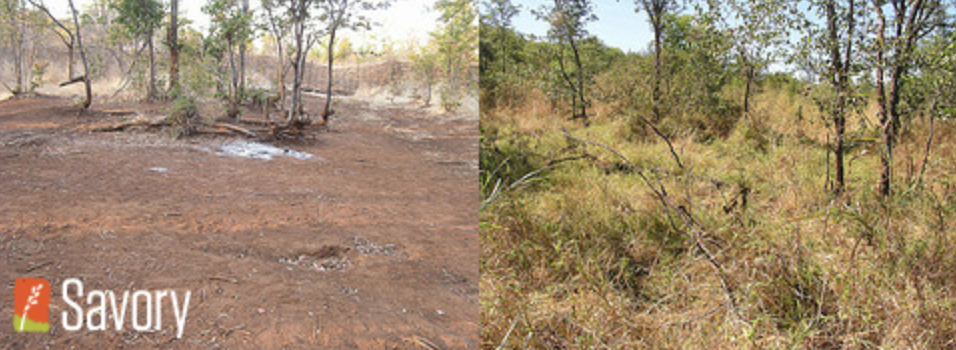
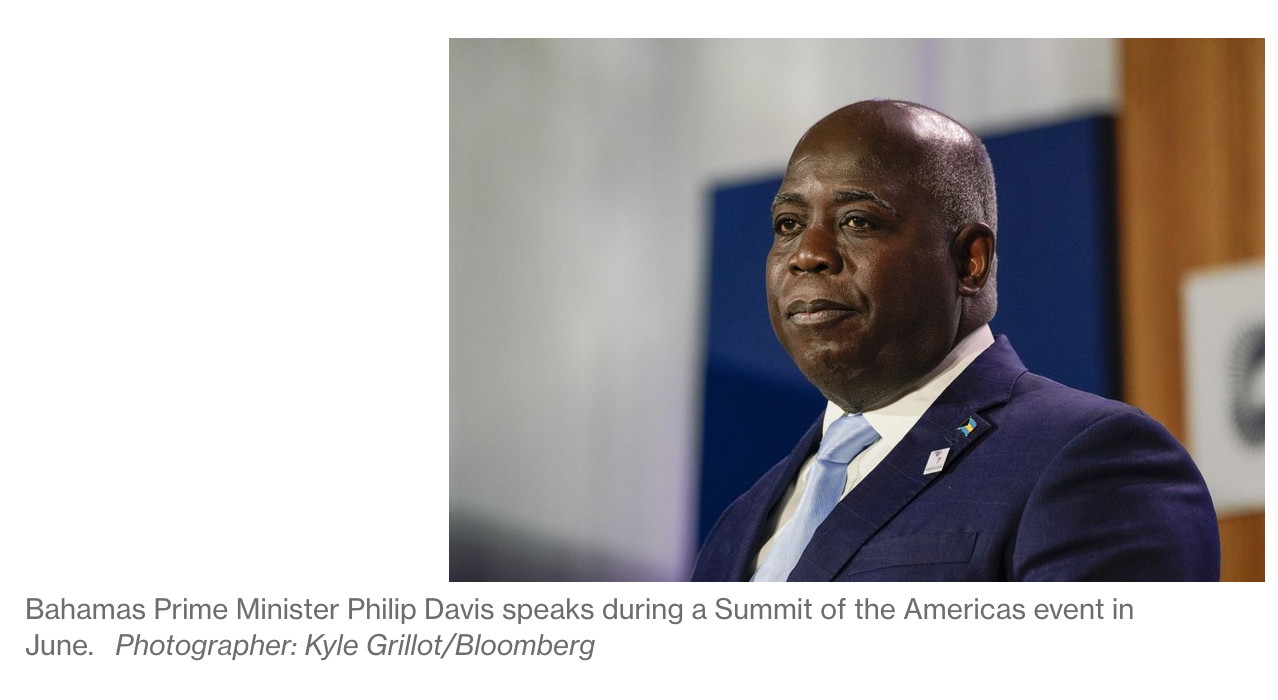
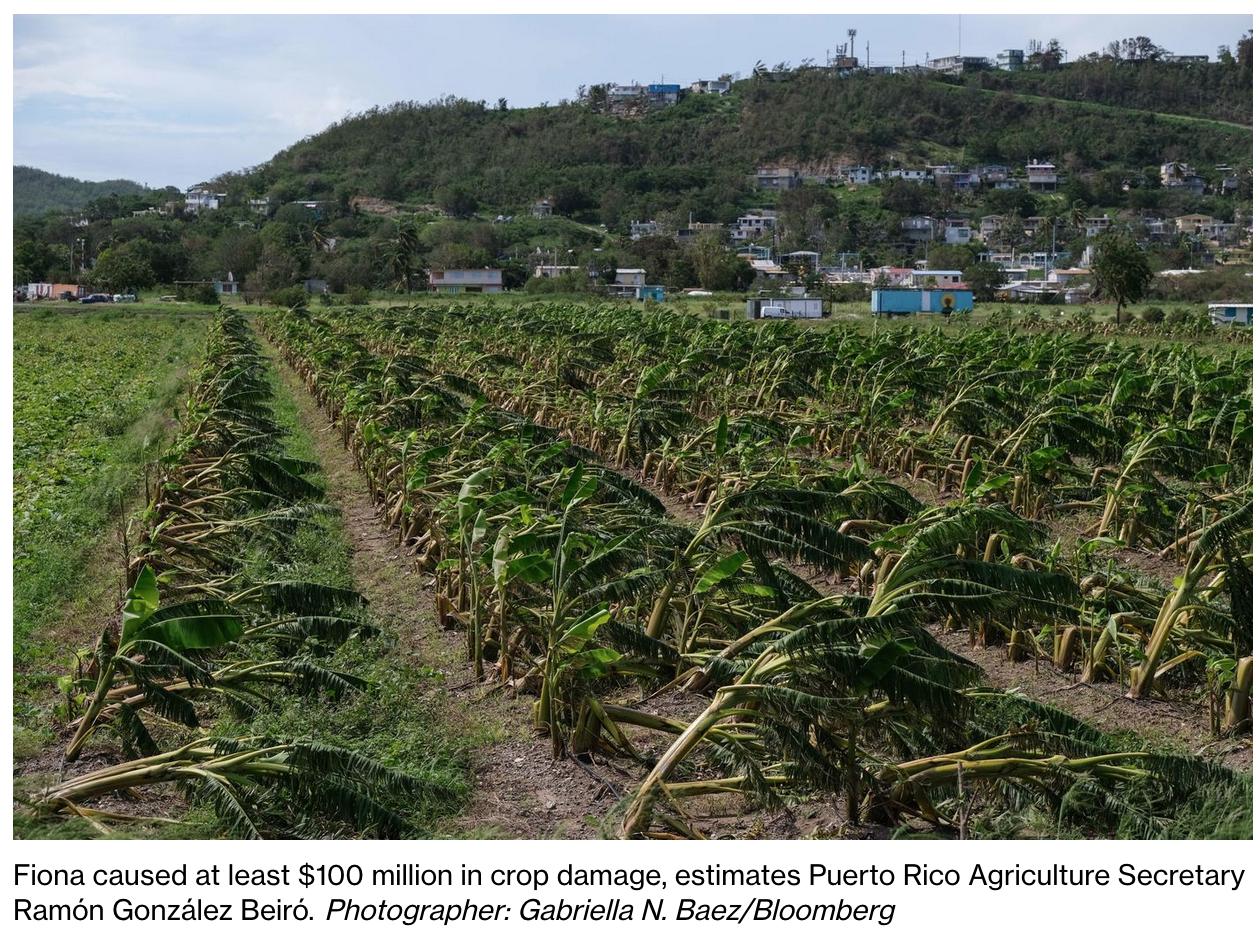
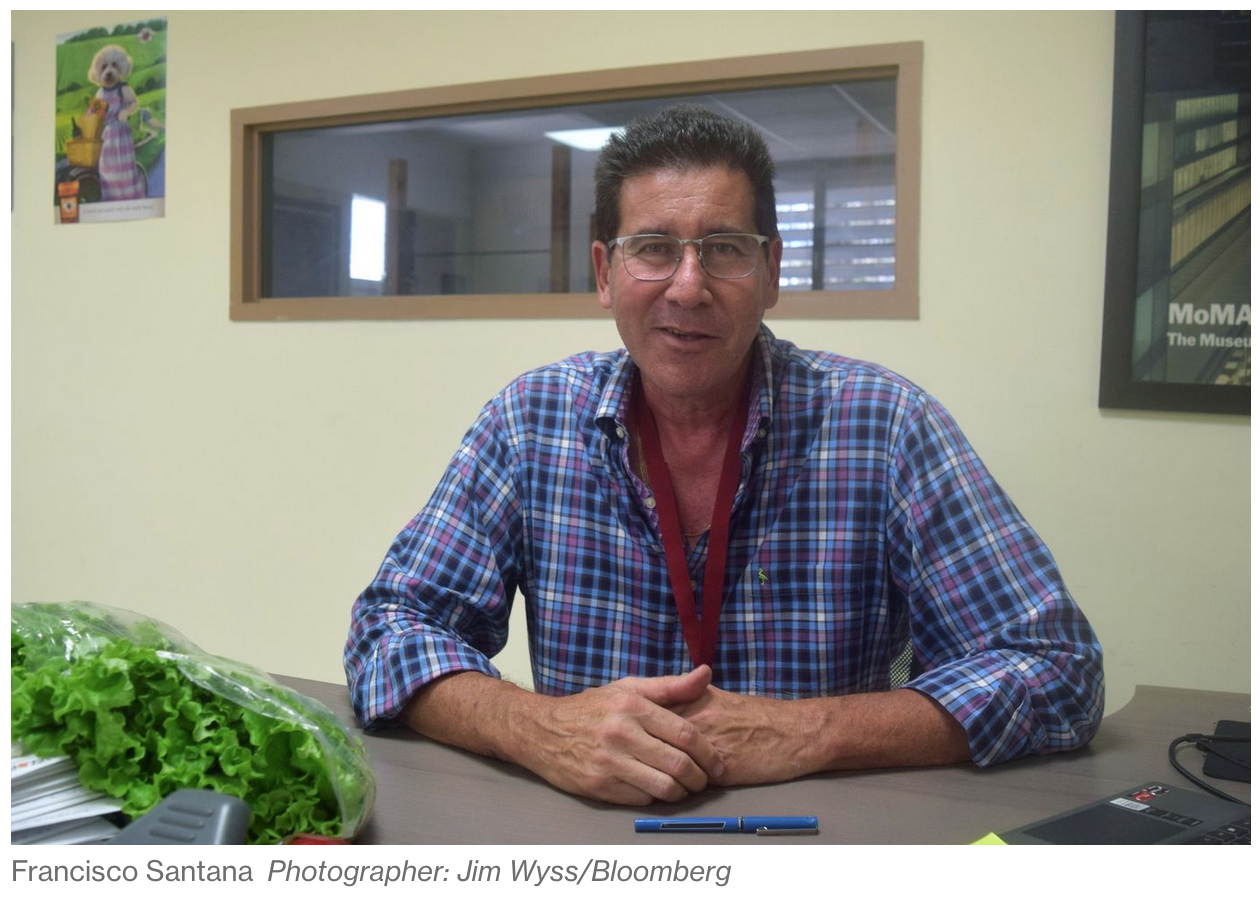


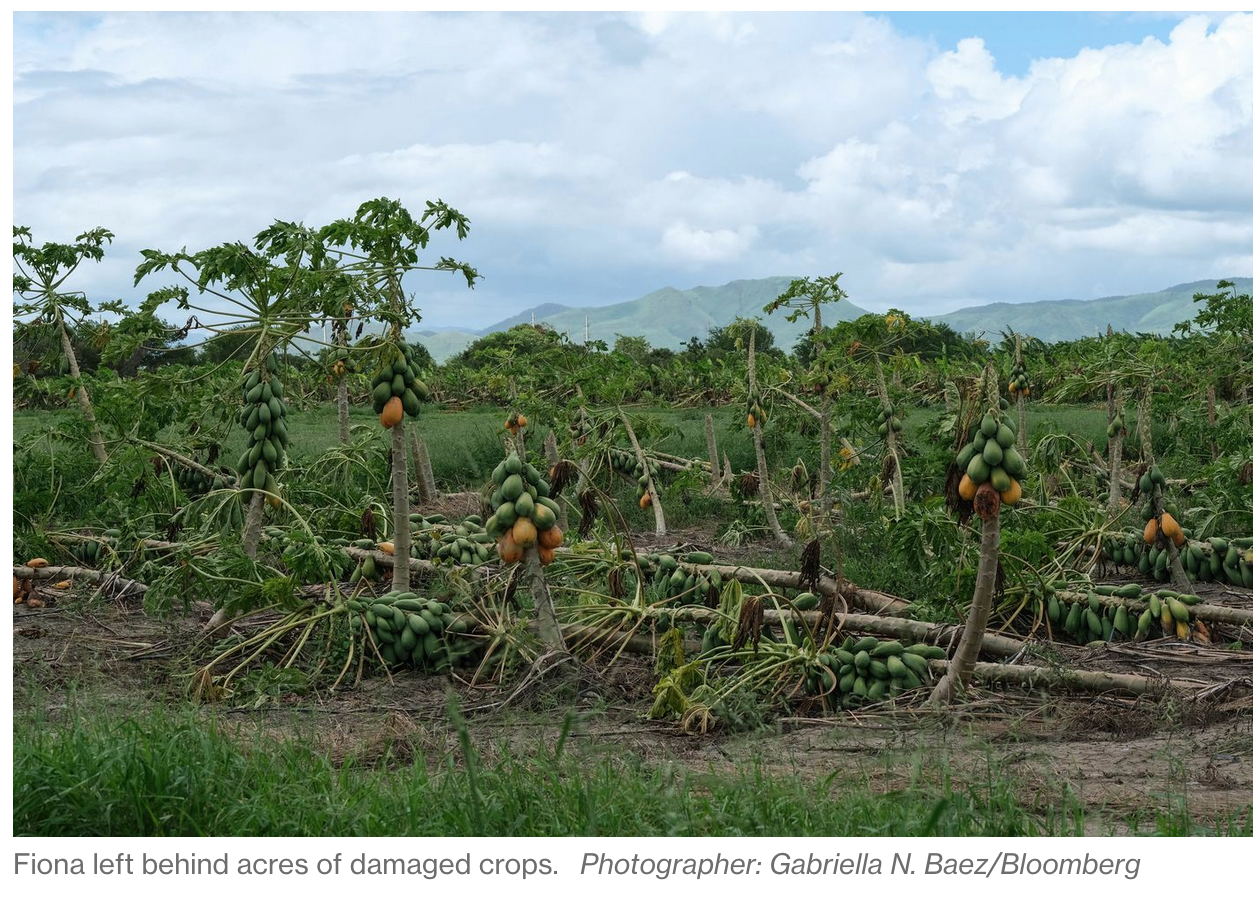
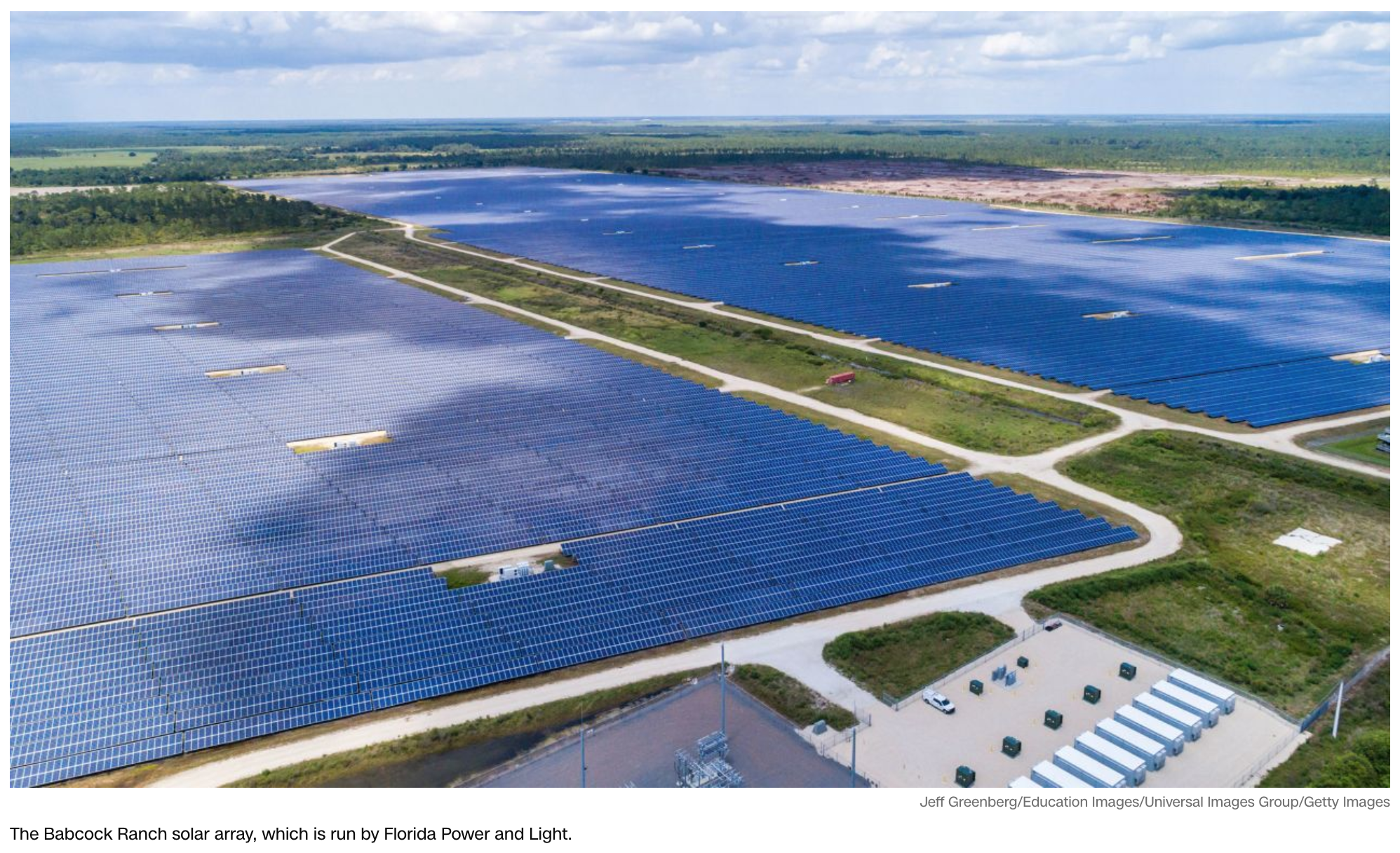
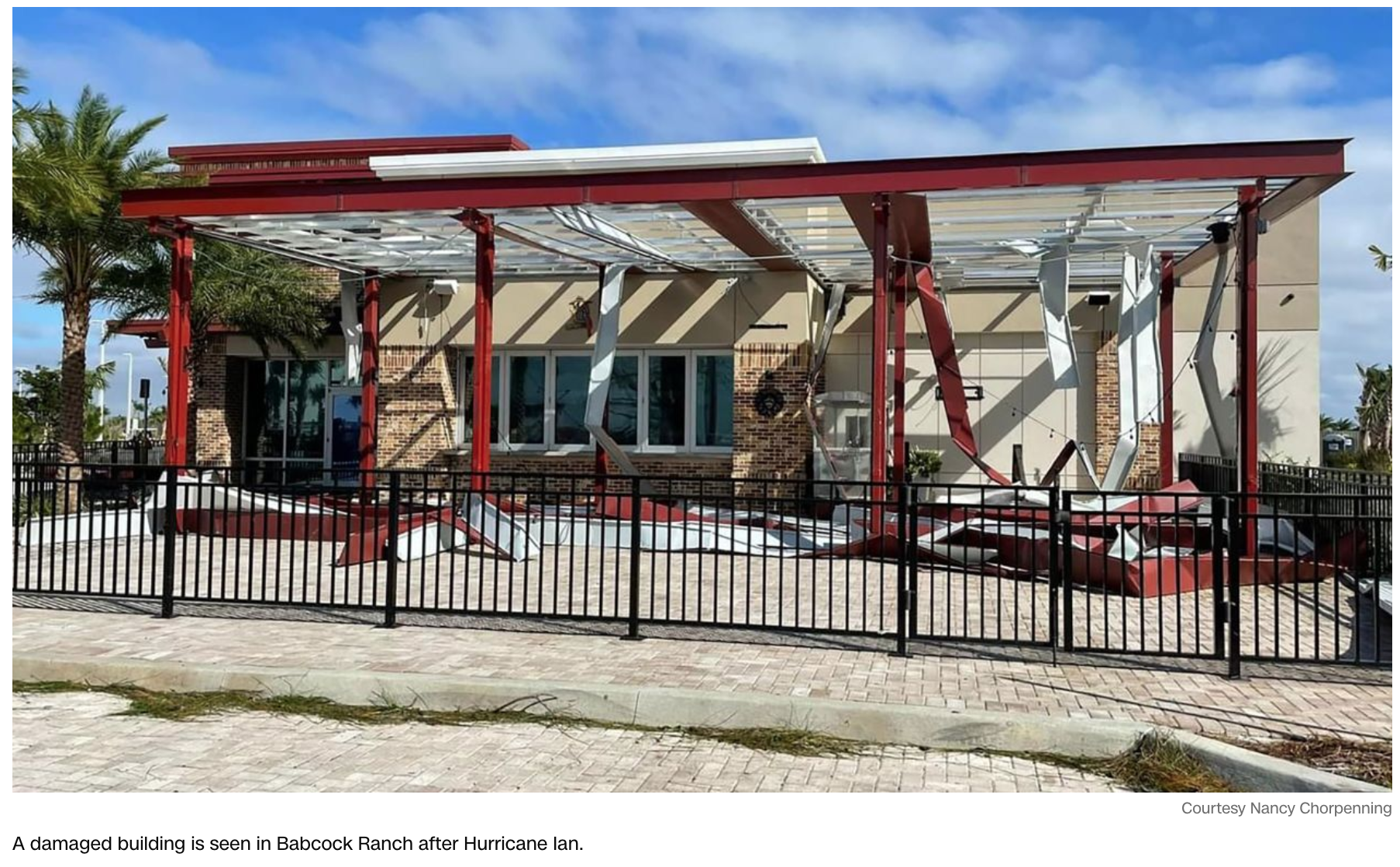

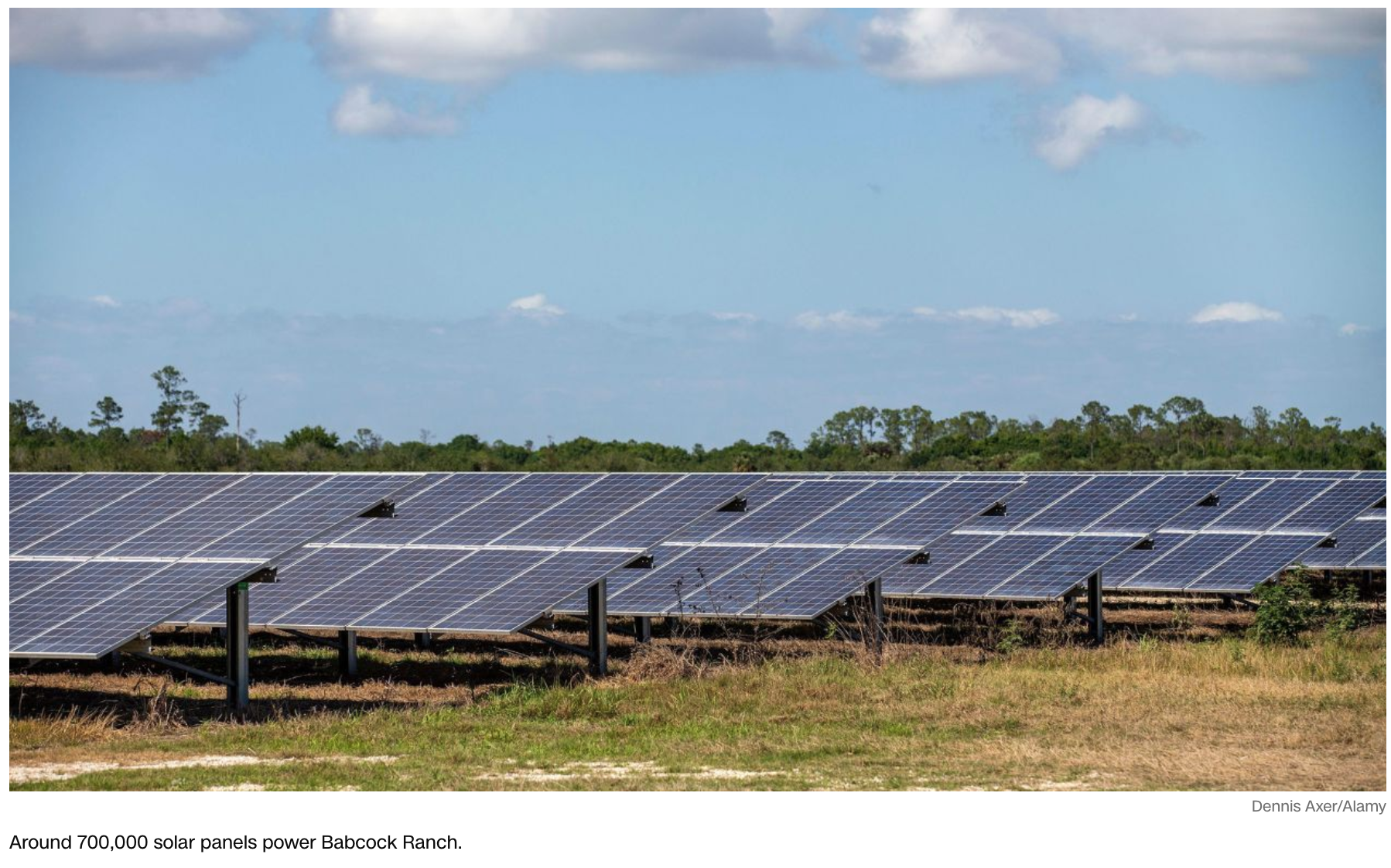
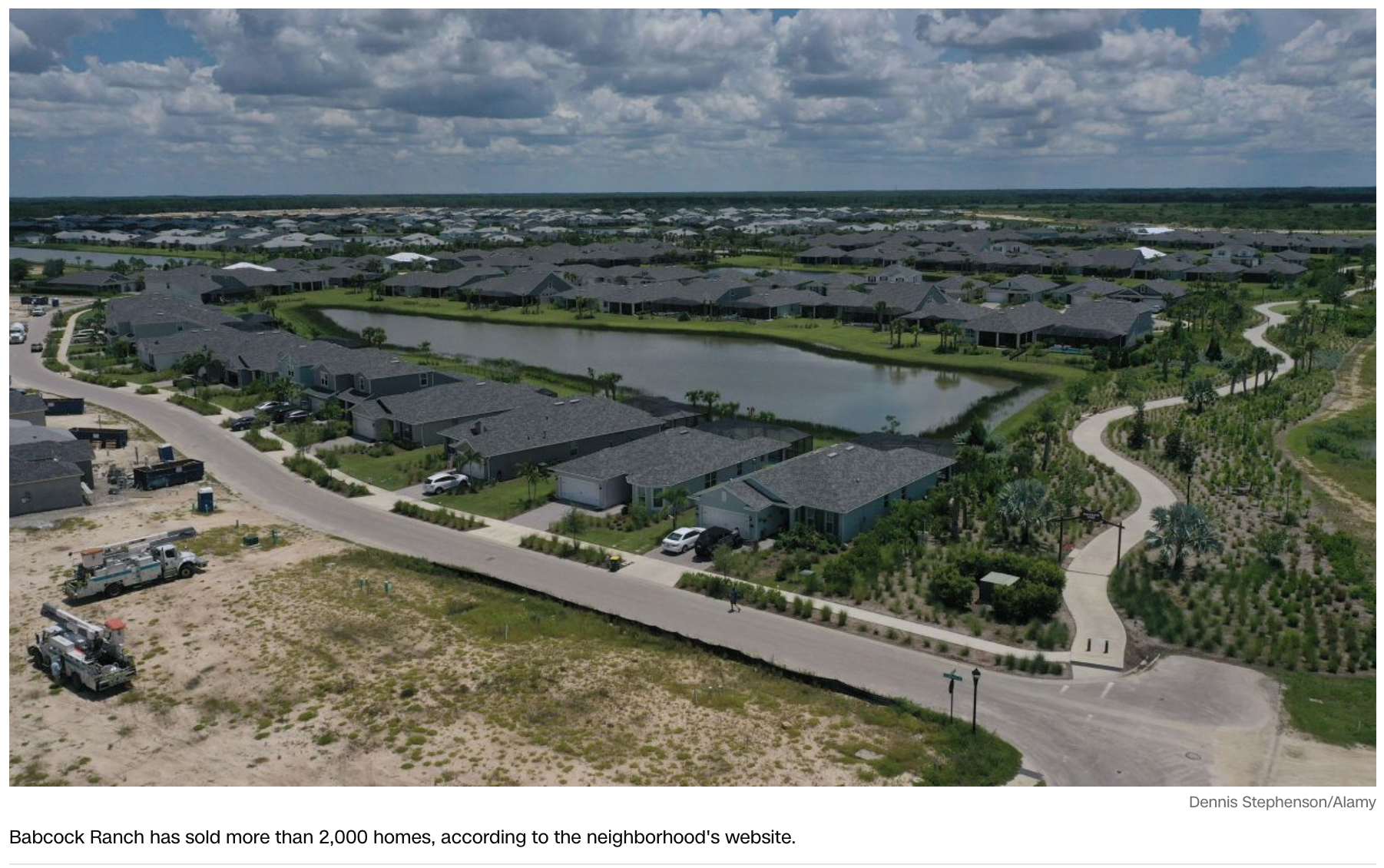
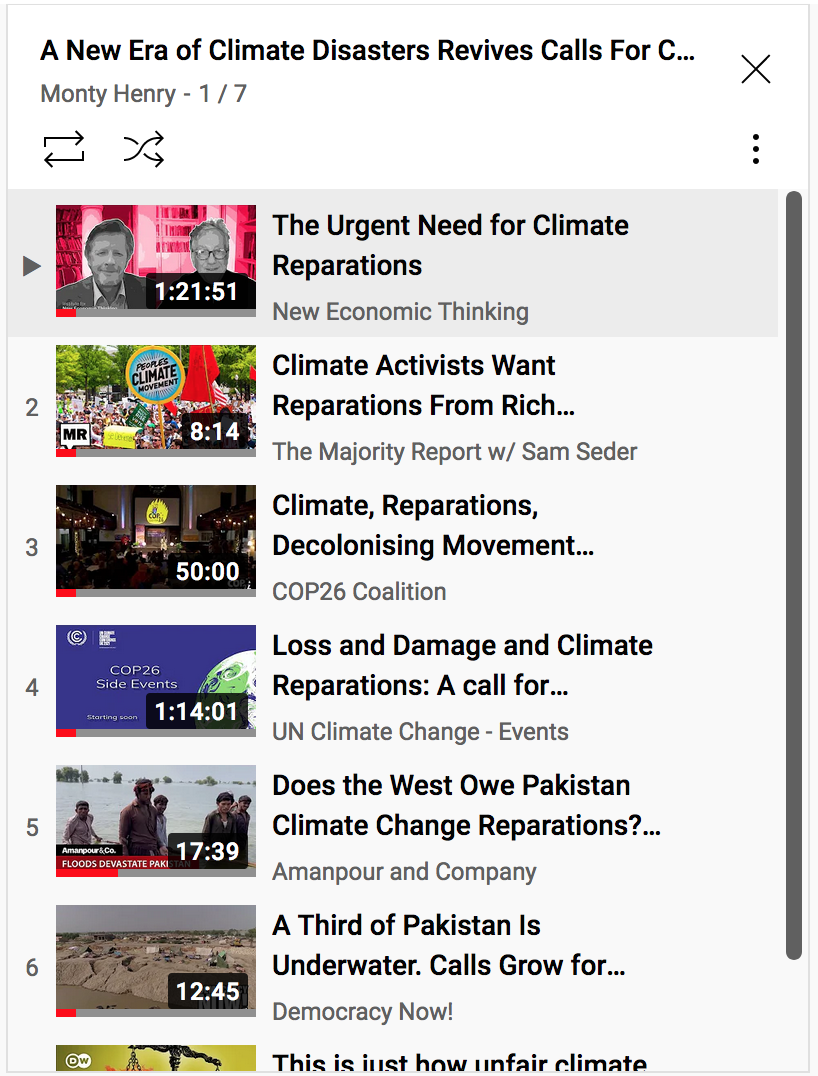
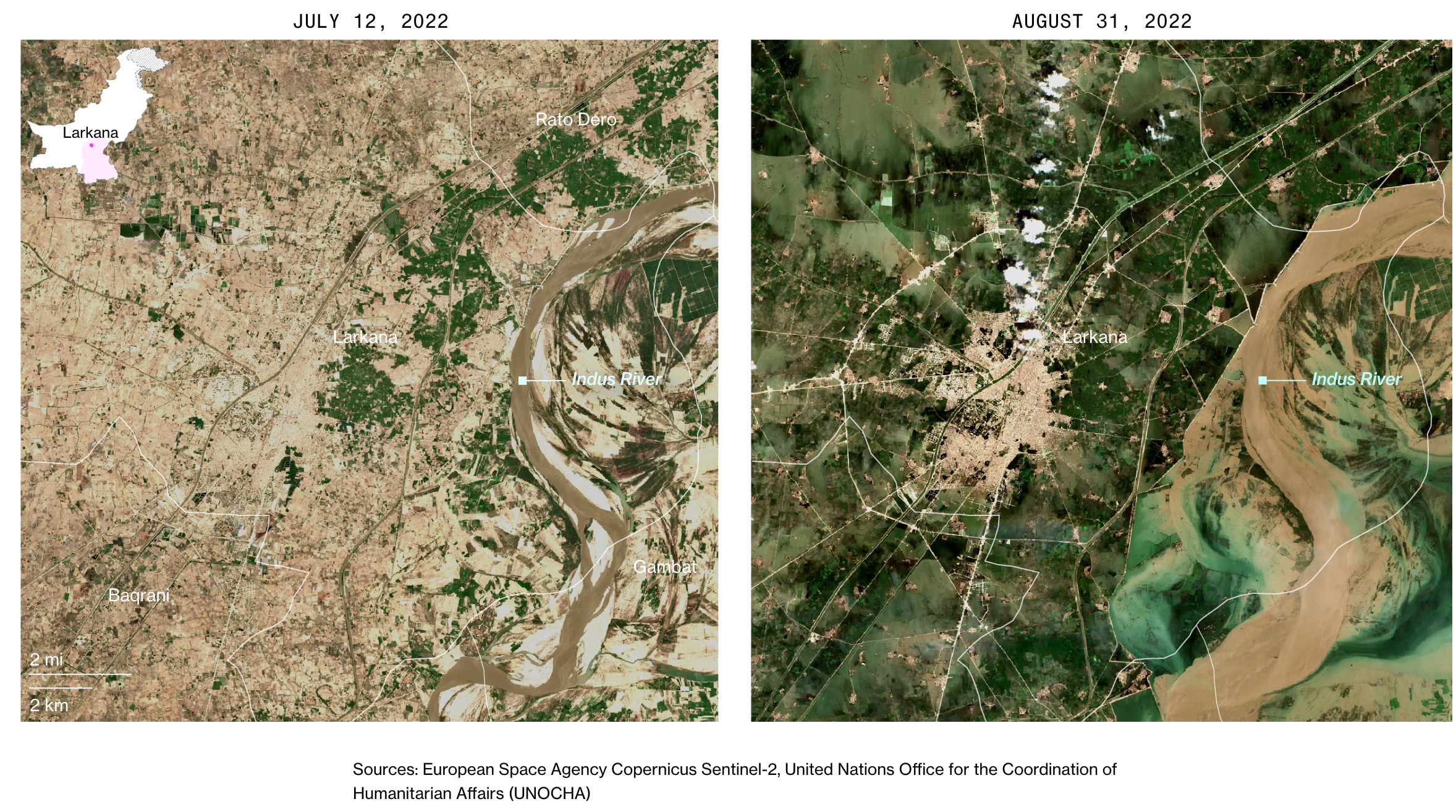
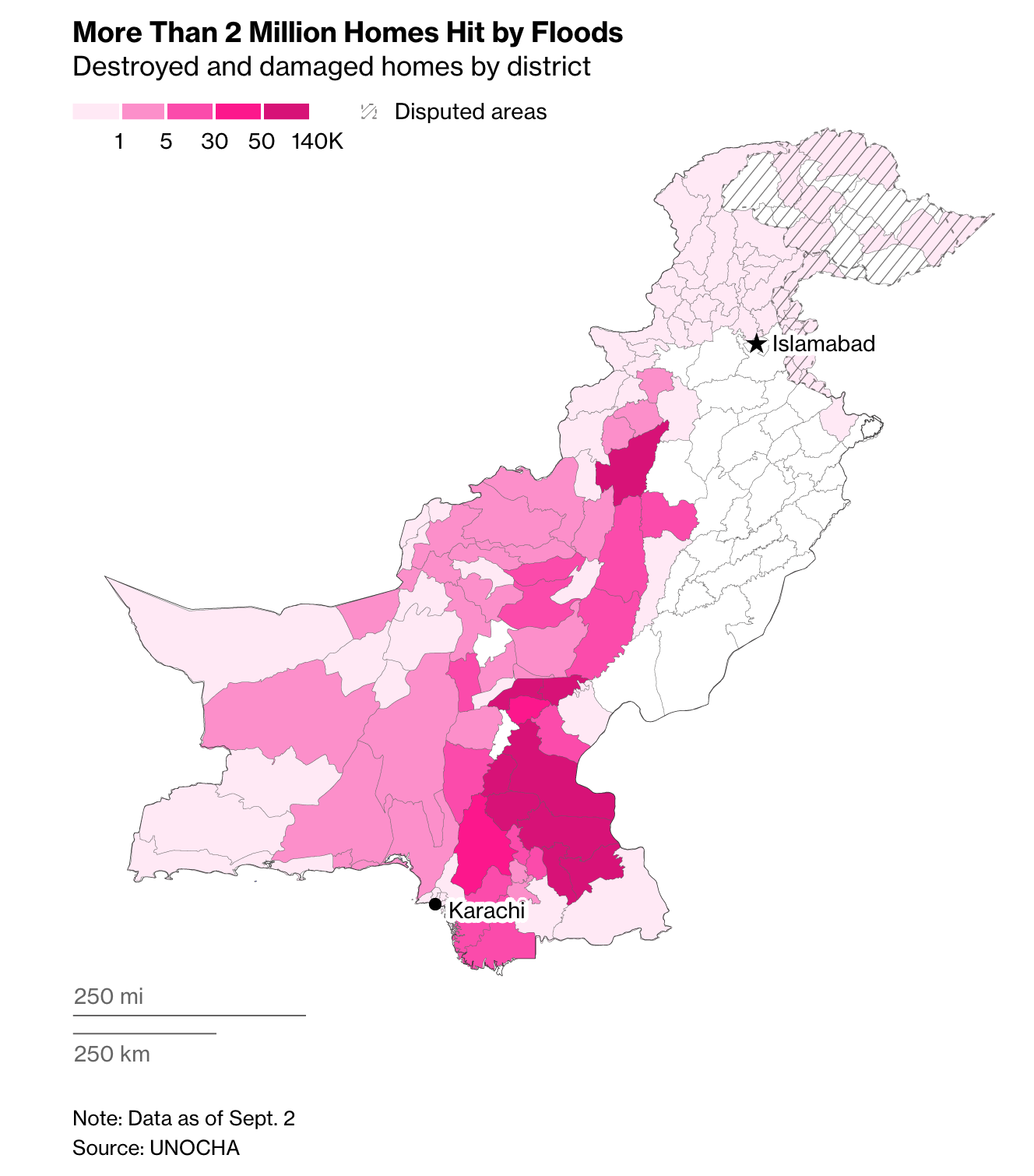


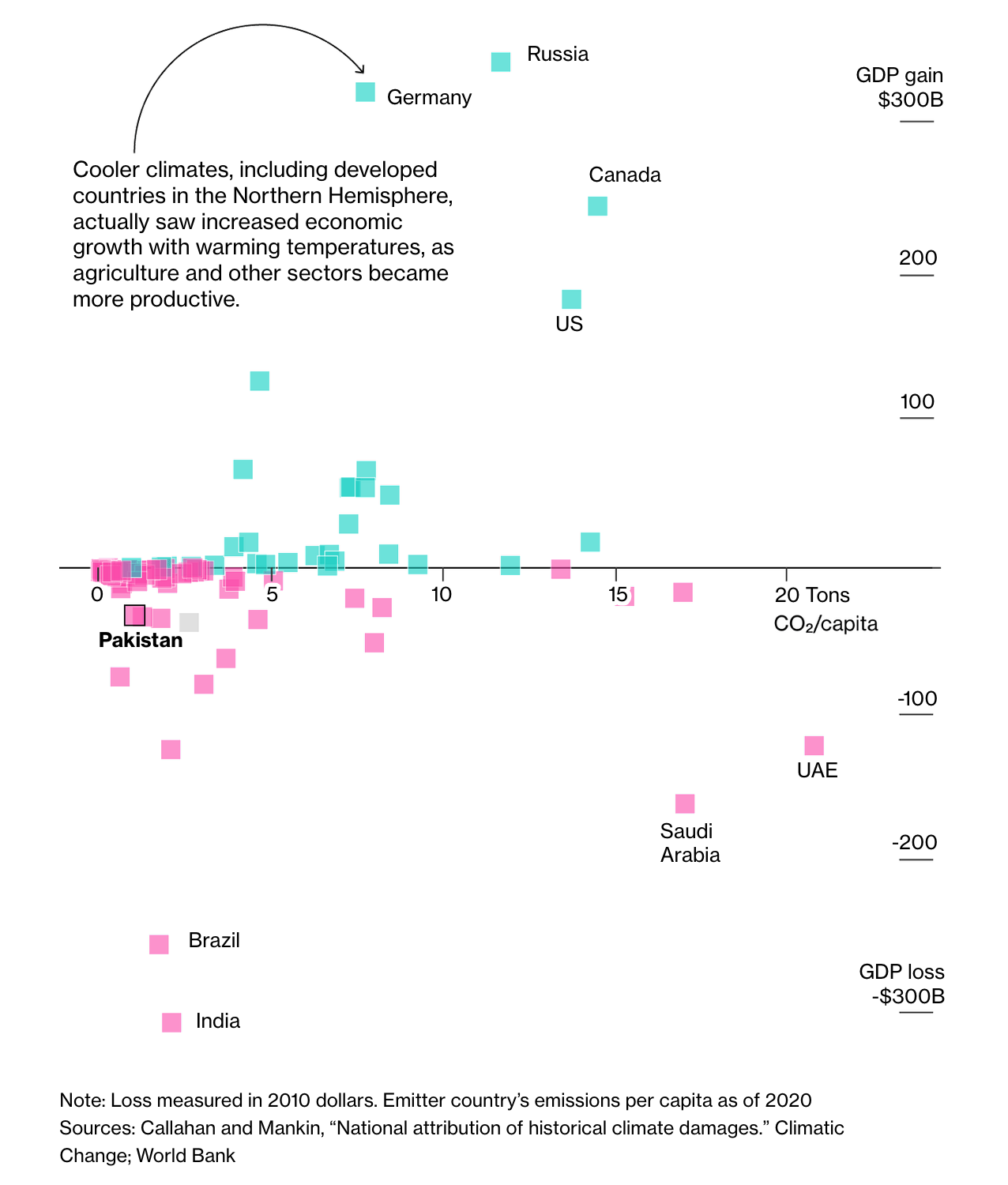
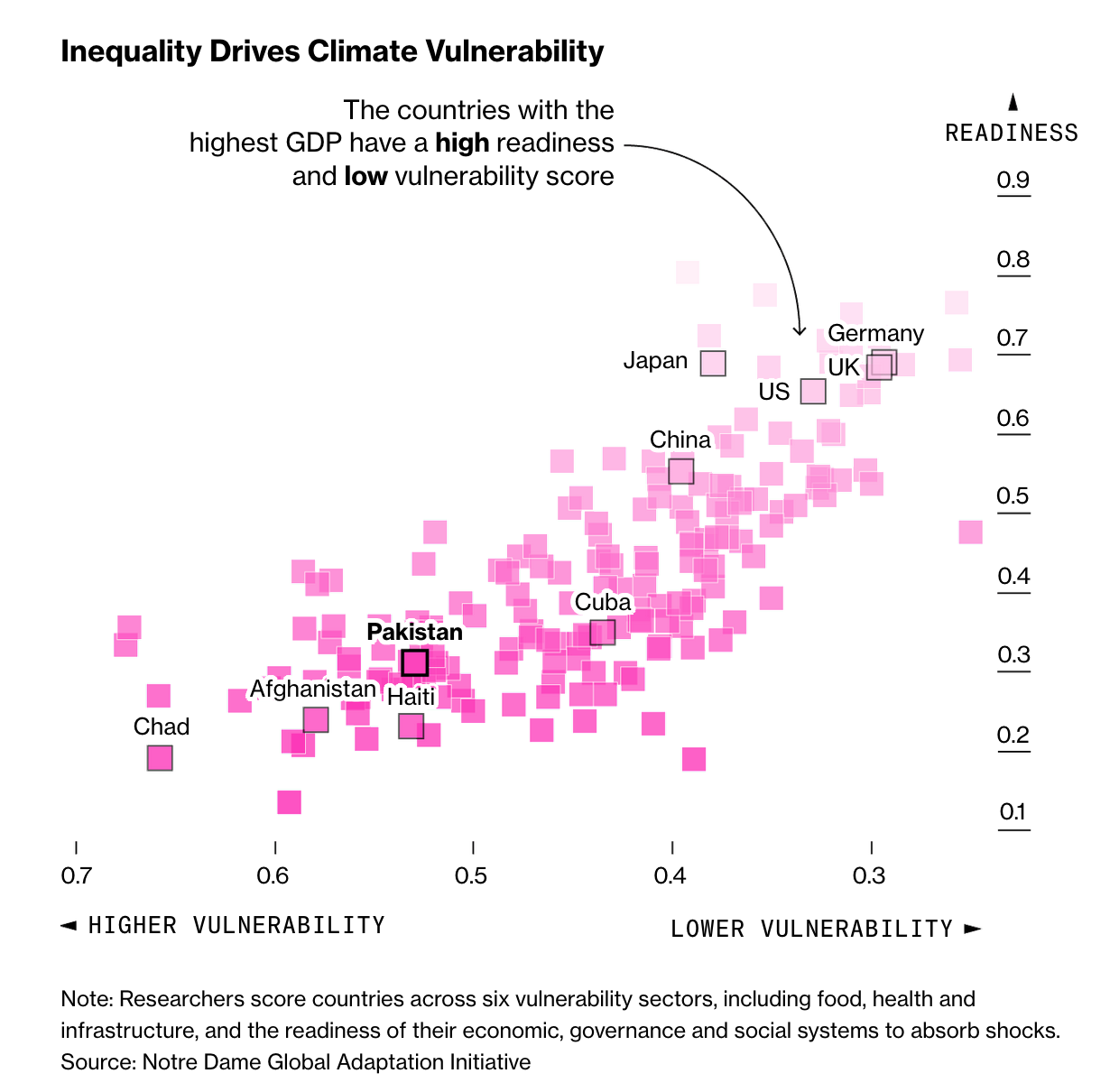
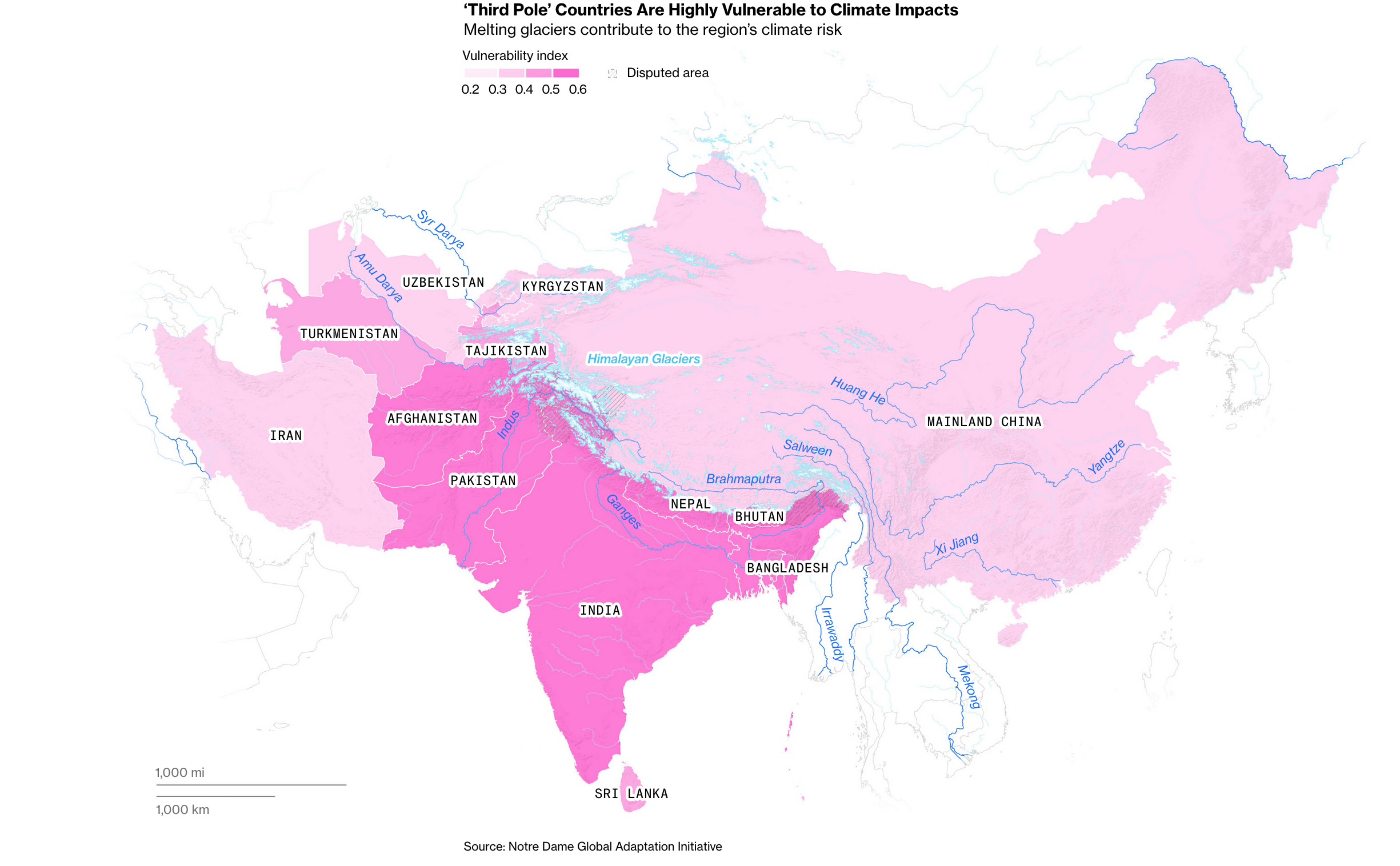

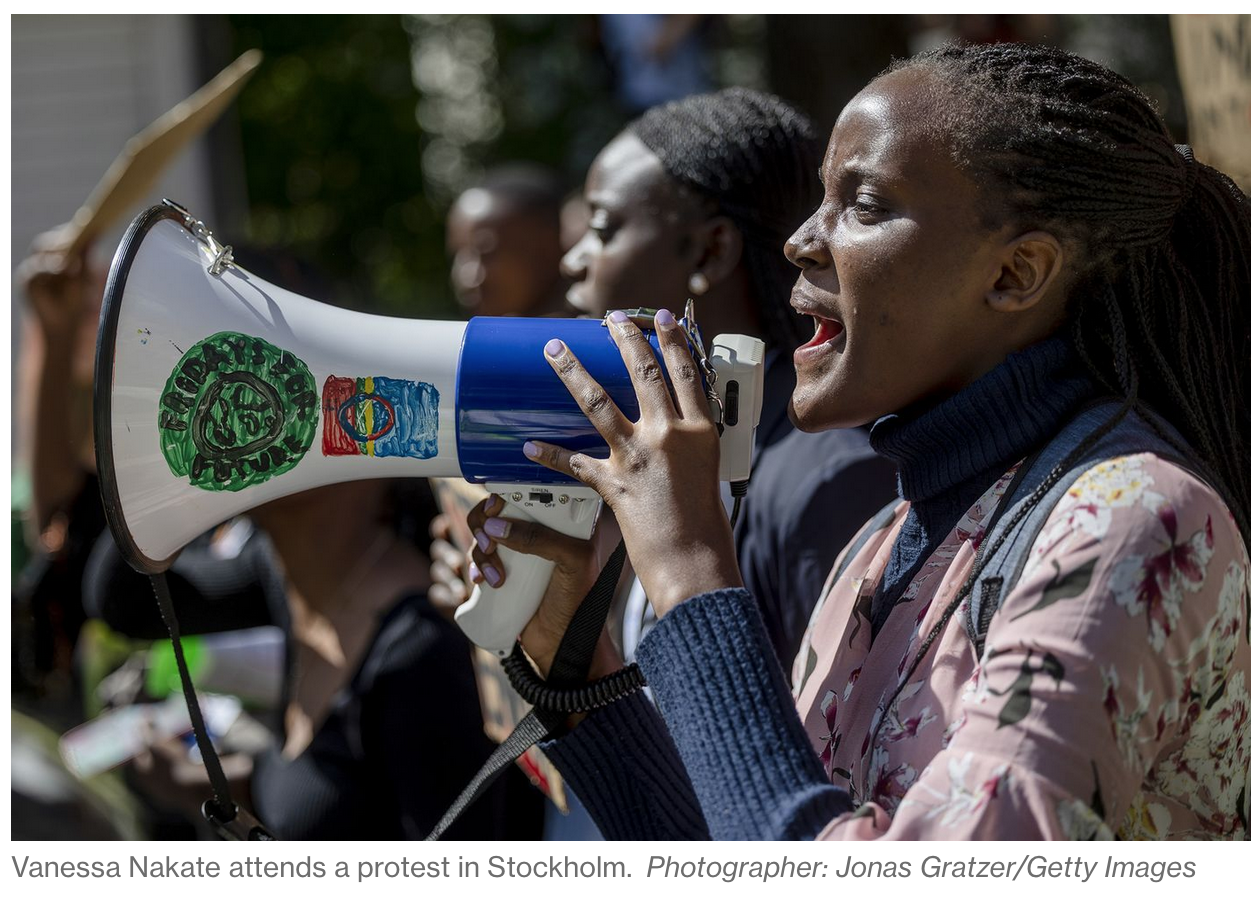

Leave a Reply
You must be logged in to post a comment.